2014 2015 Coding and Compliance Update for Pediatric
























































































































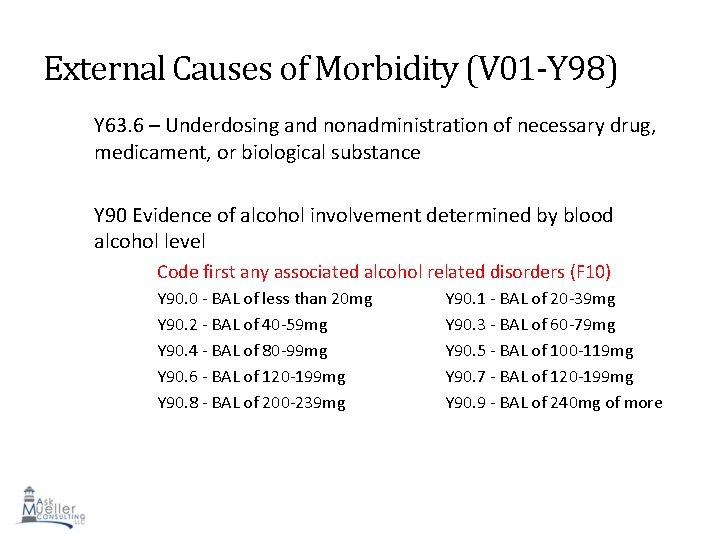
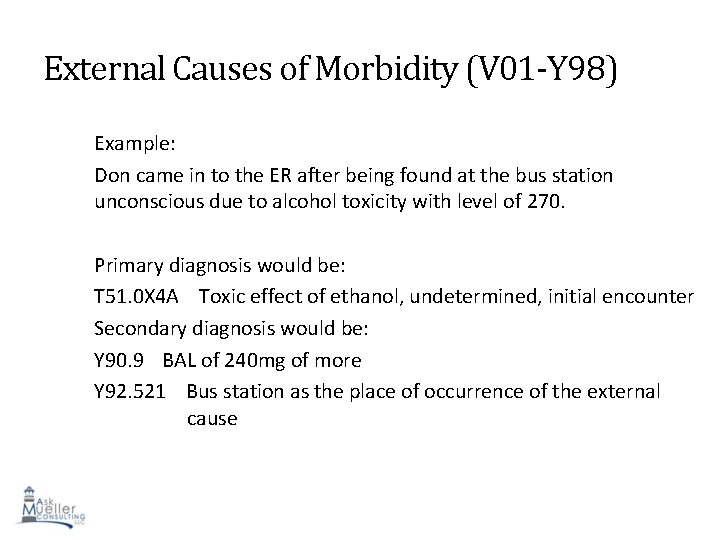
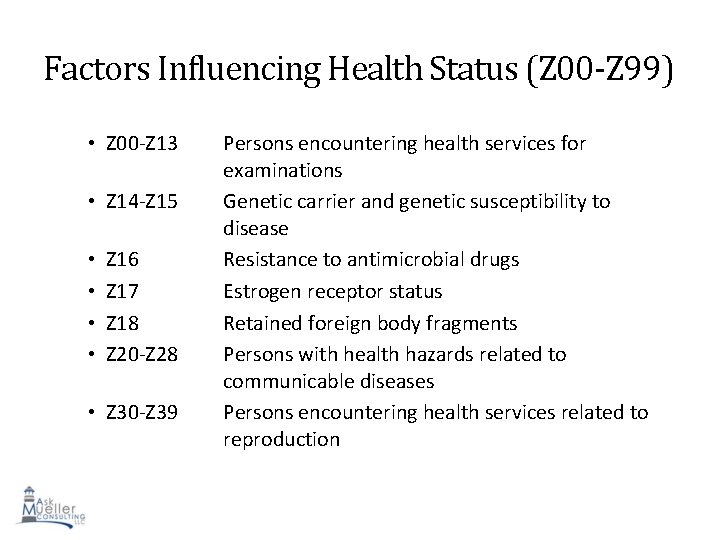
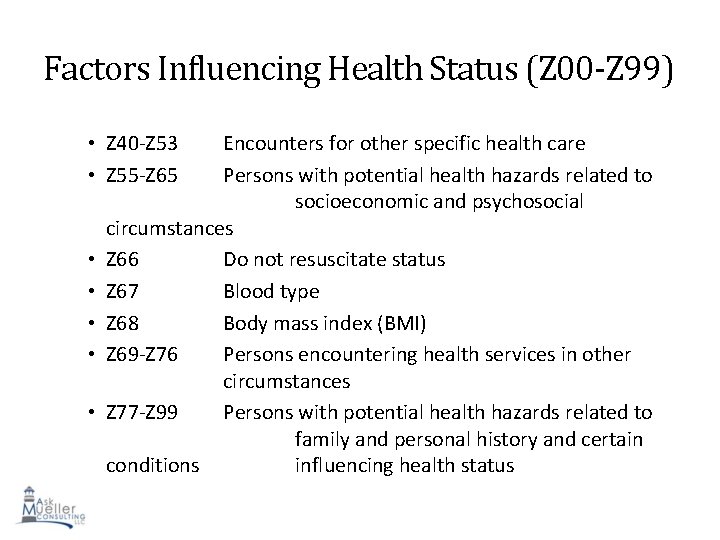
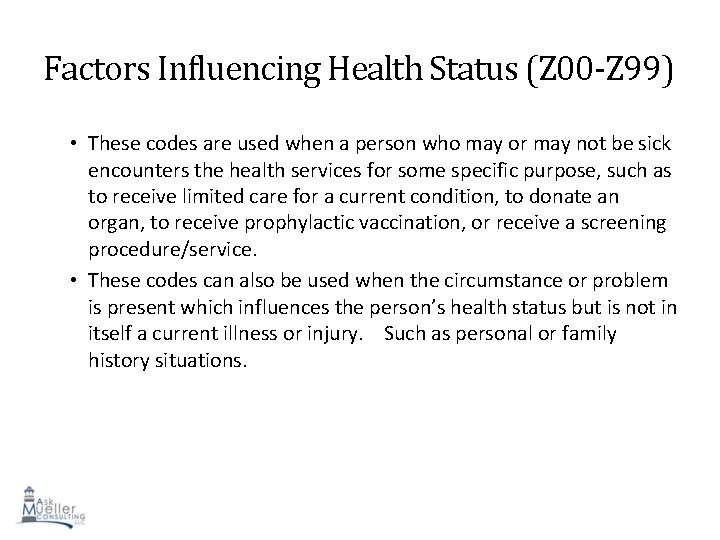
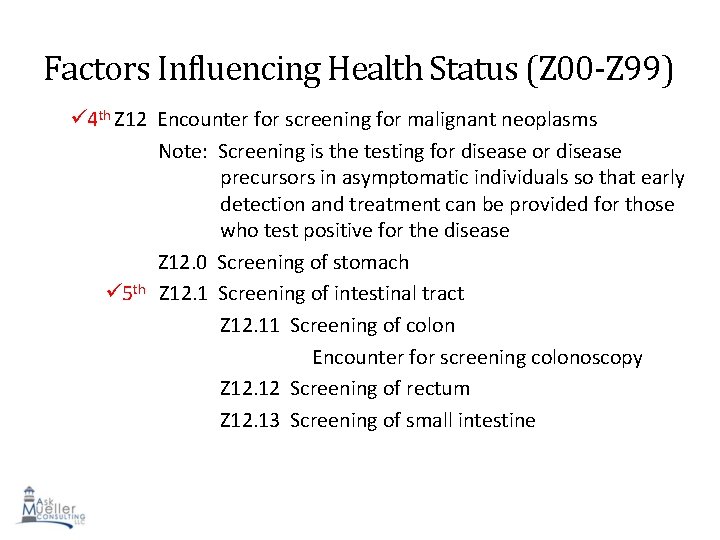
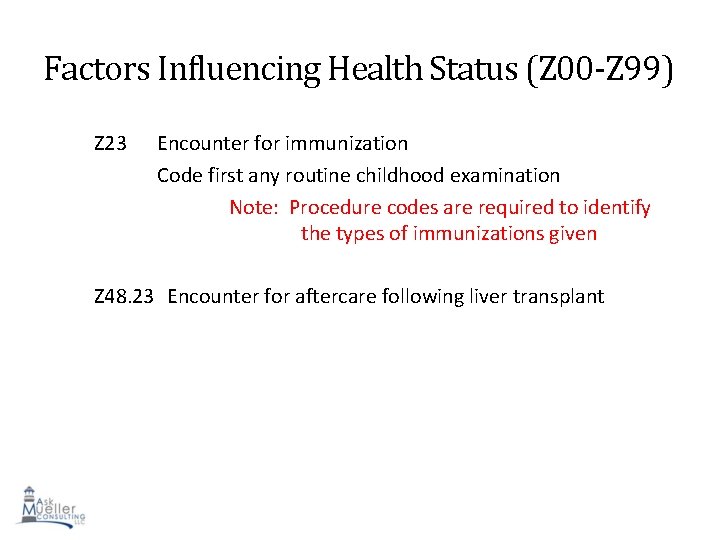
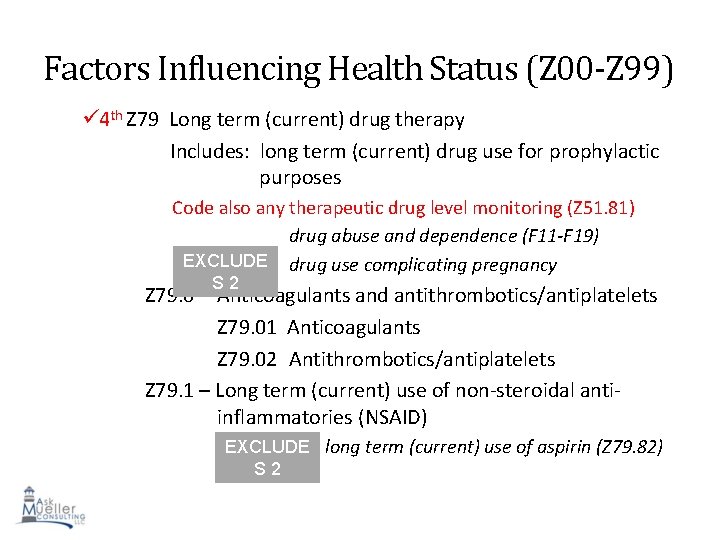
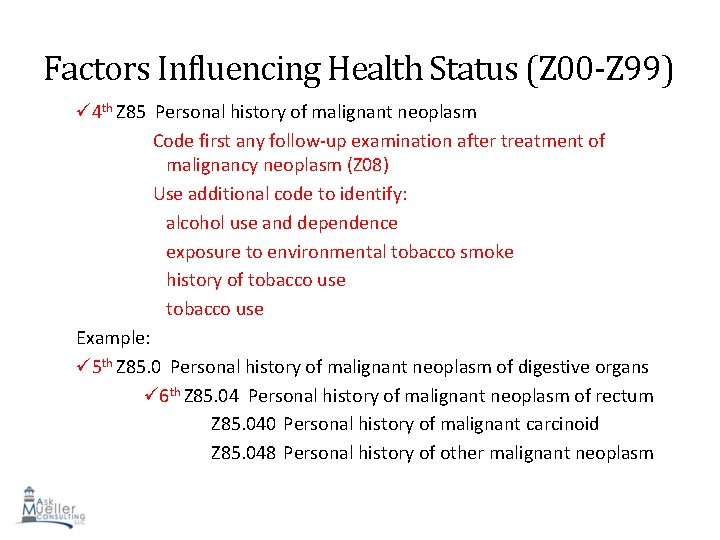
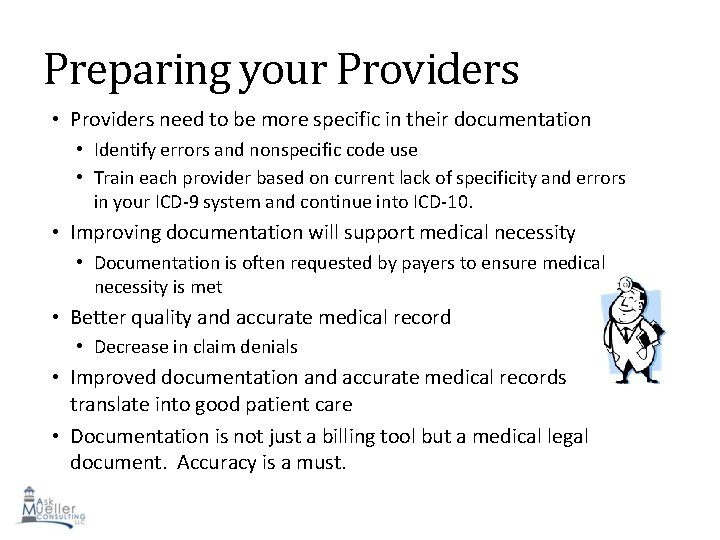

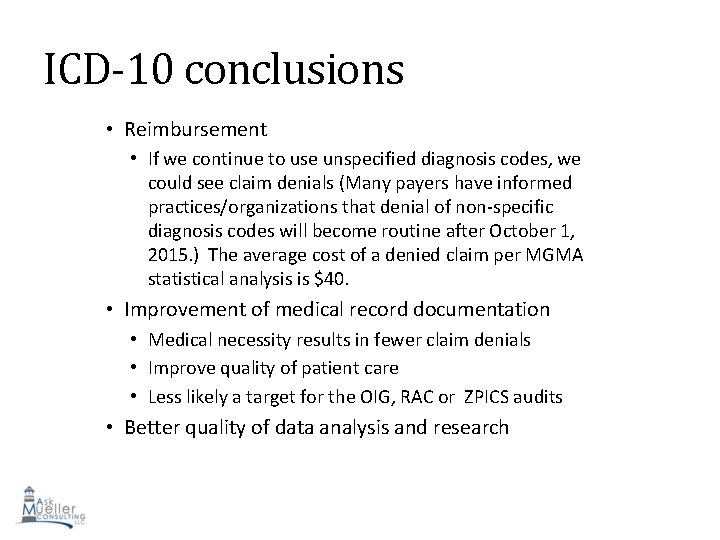
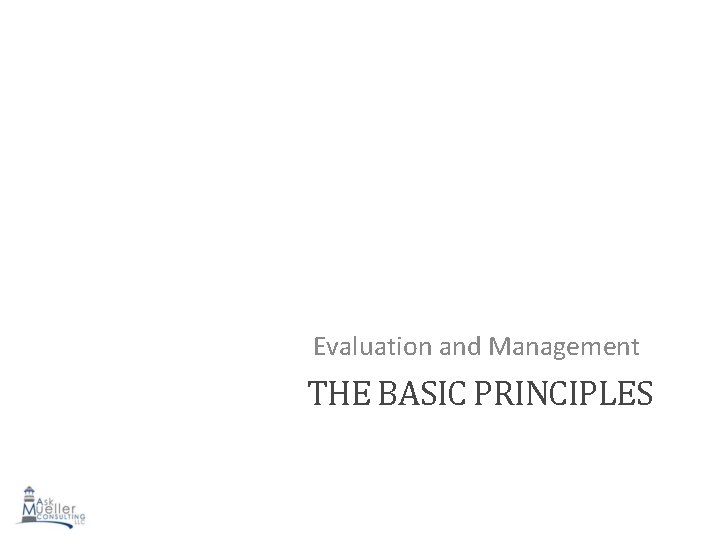
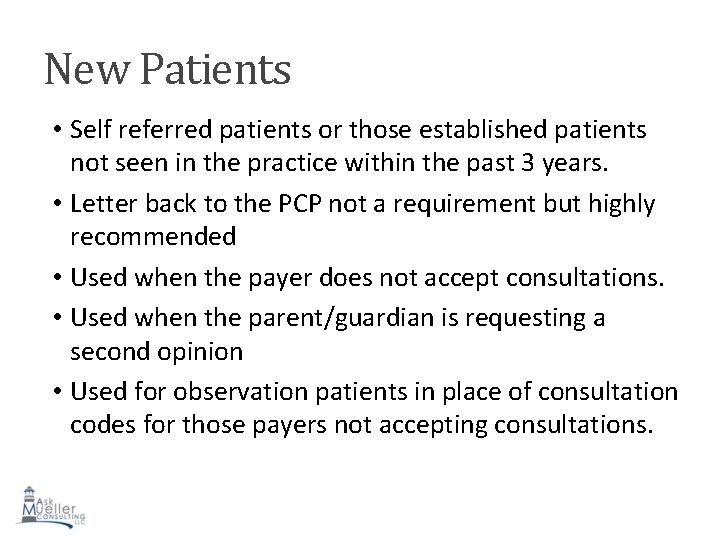
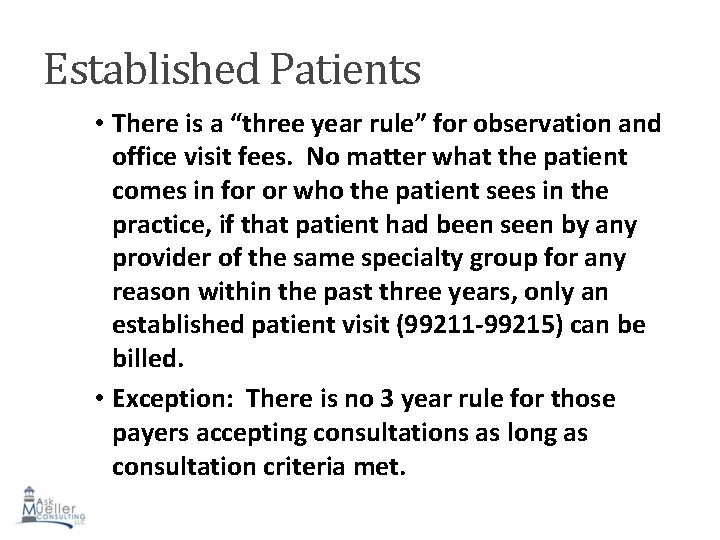
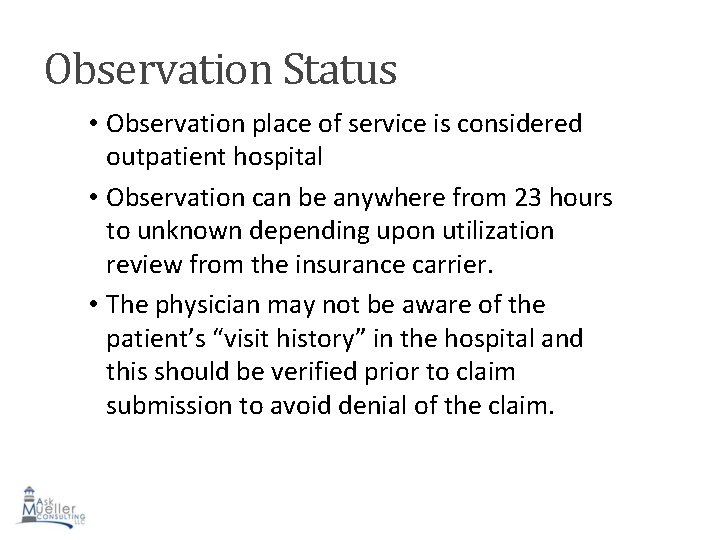
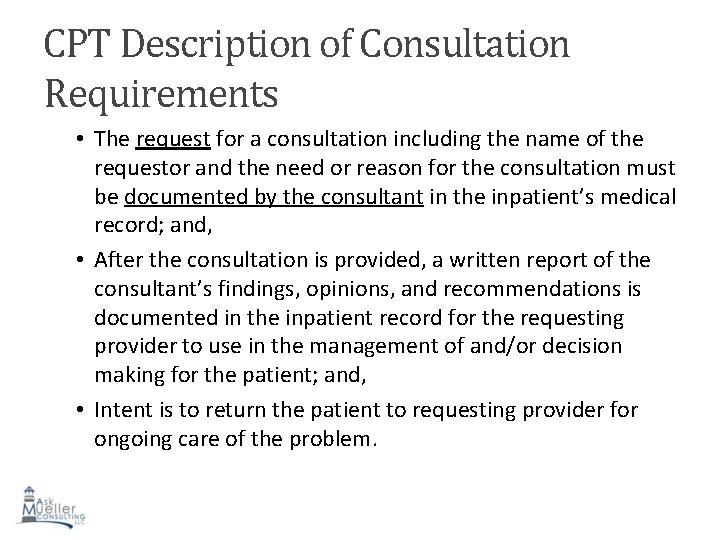
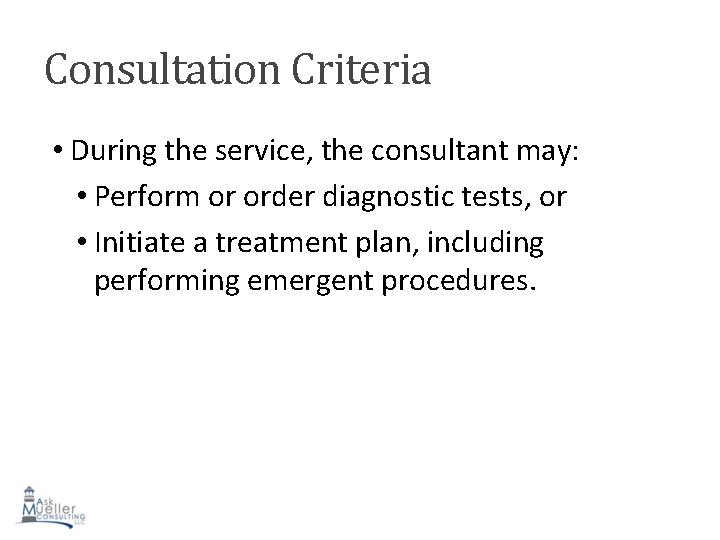
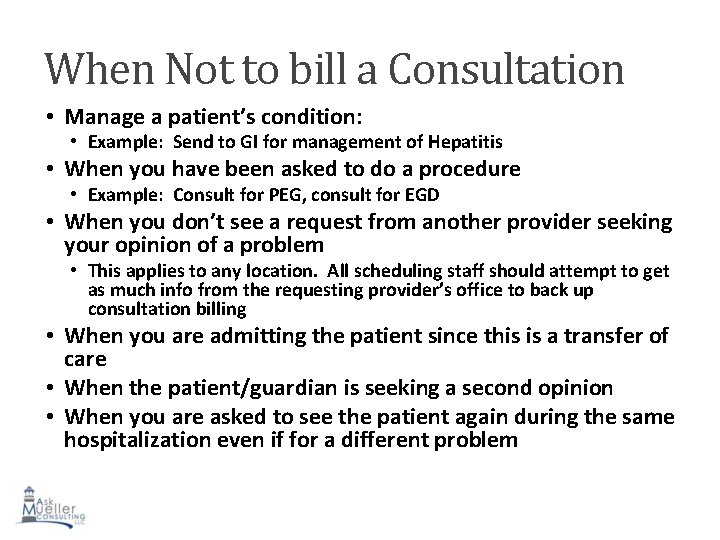
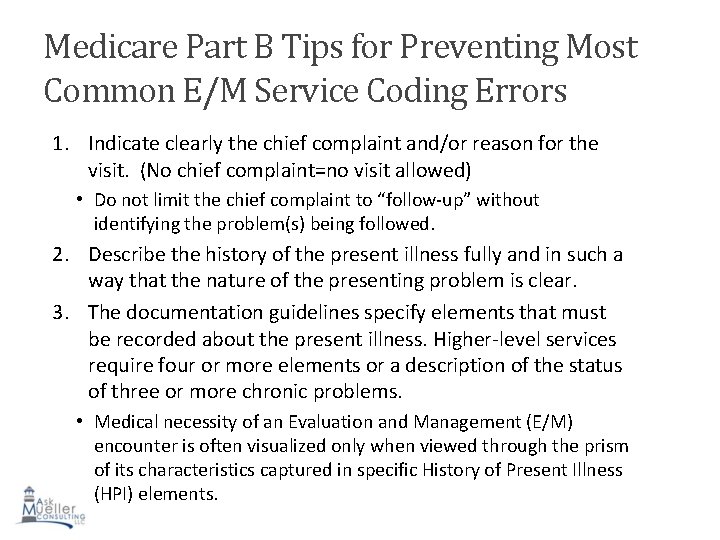
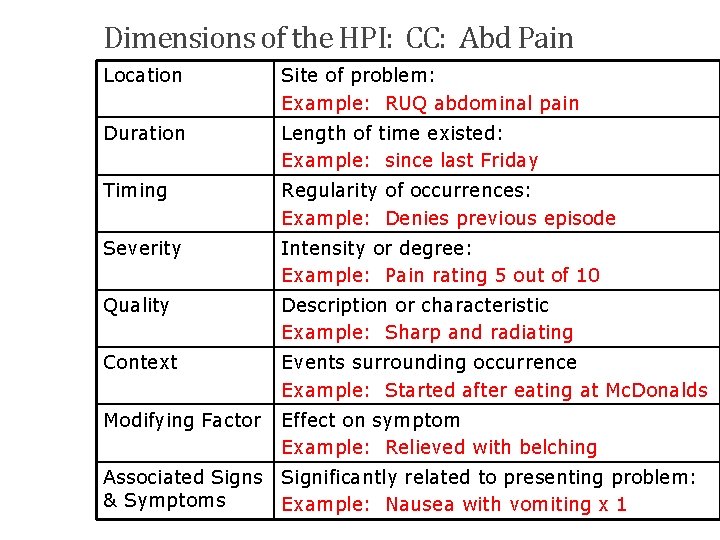
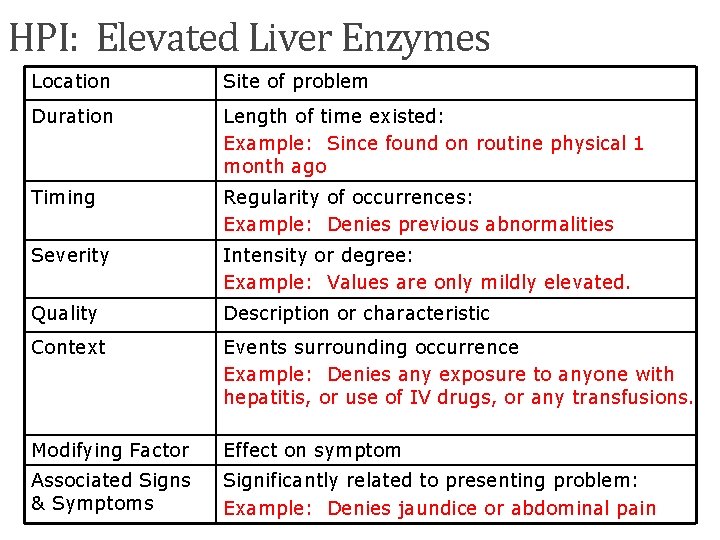
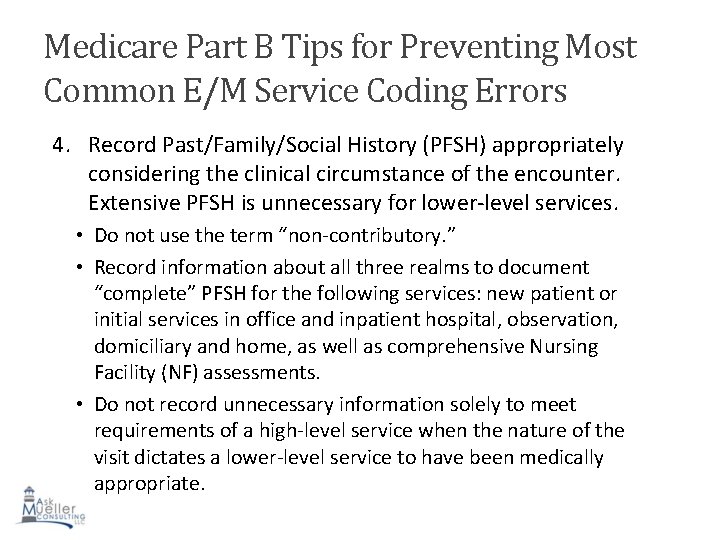

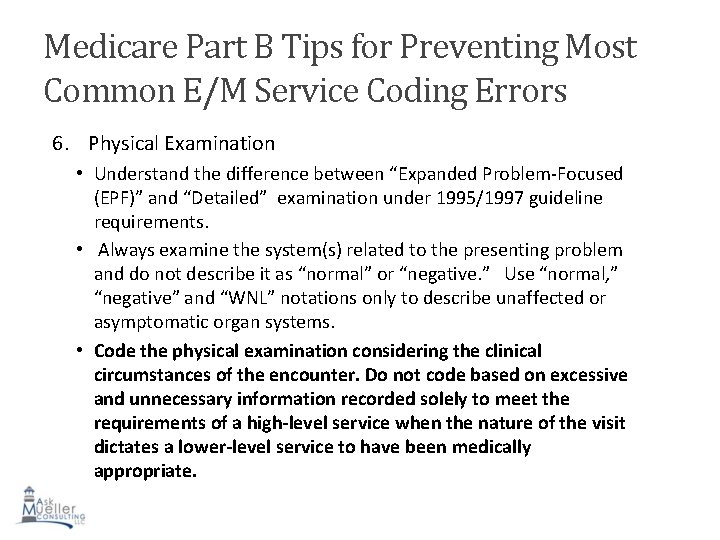
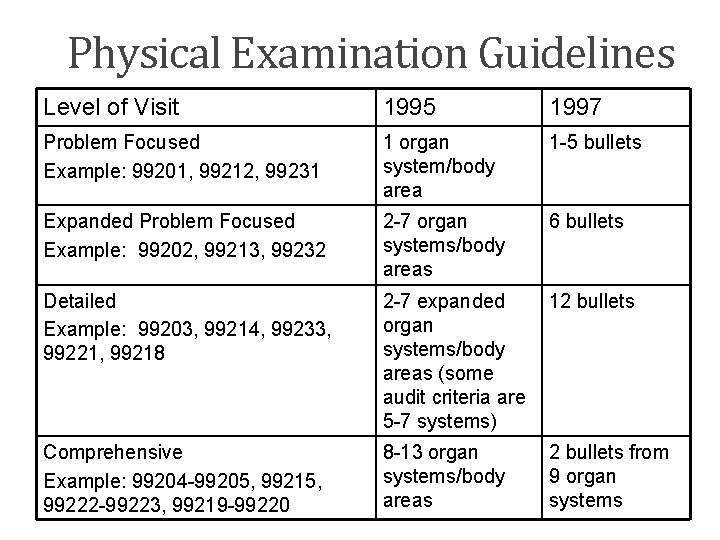
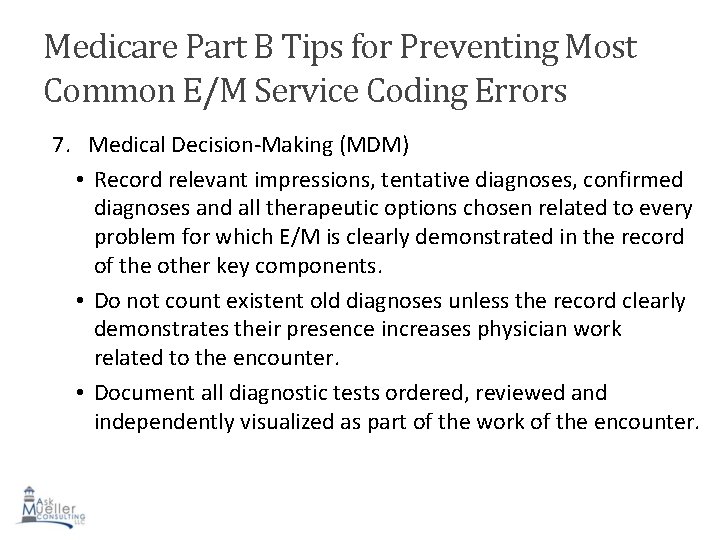
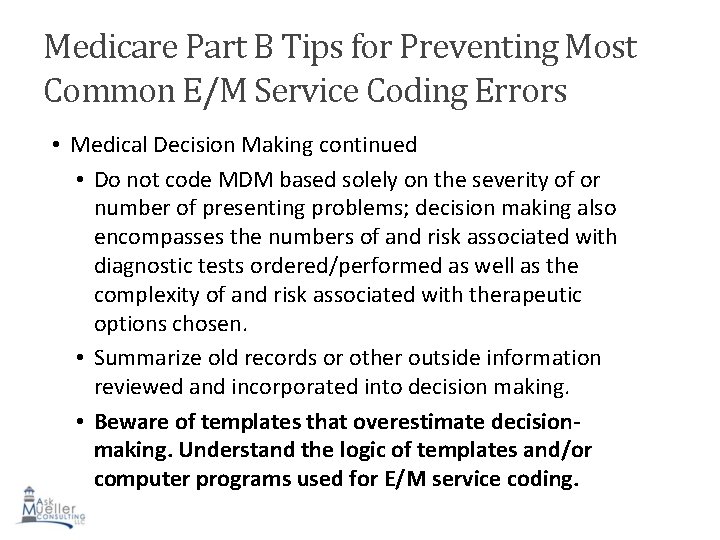
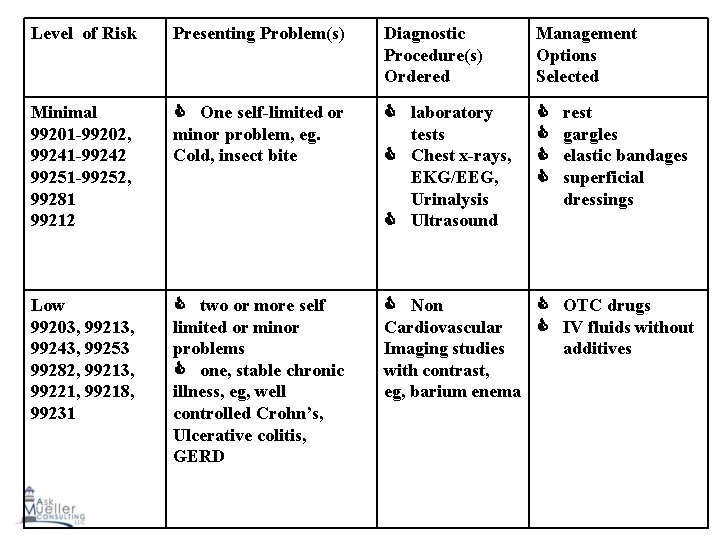
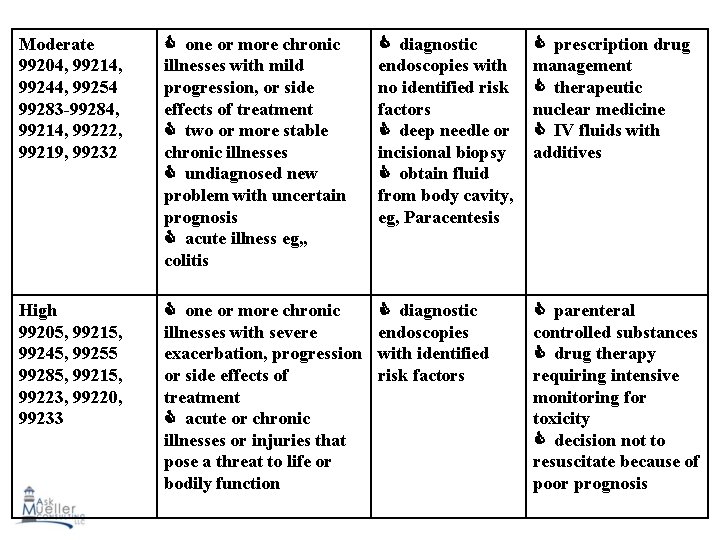
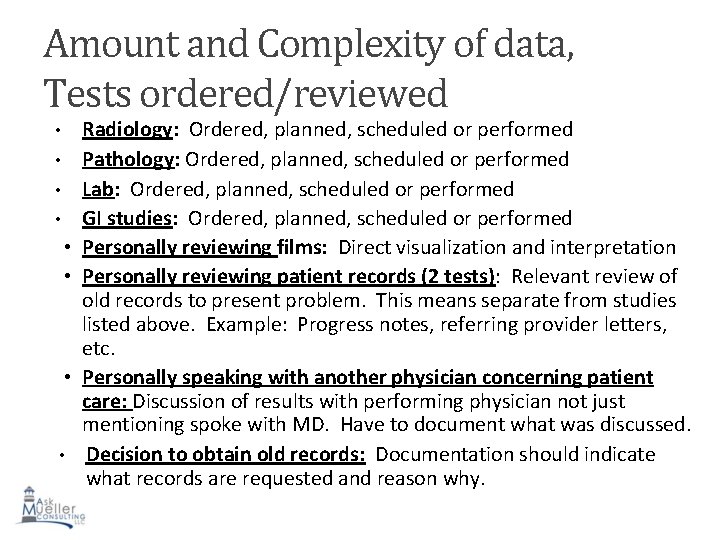
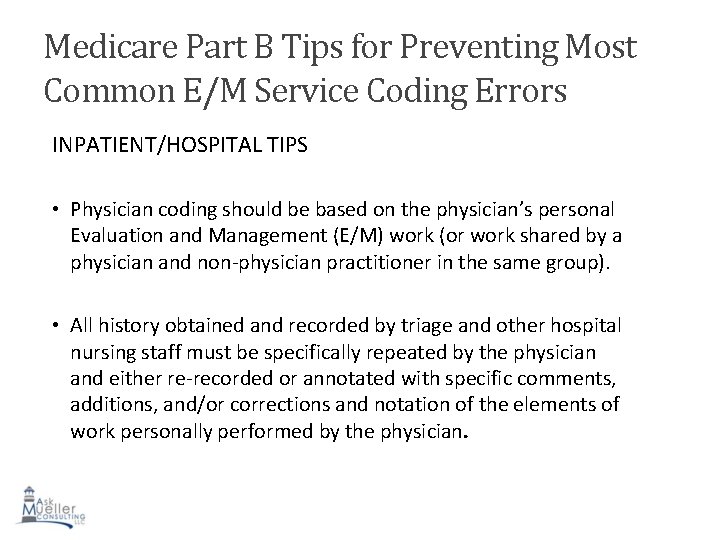
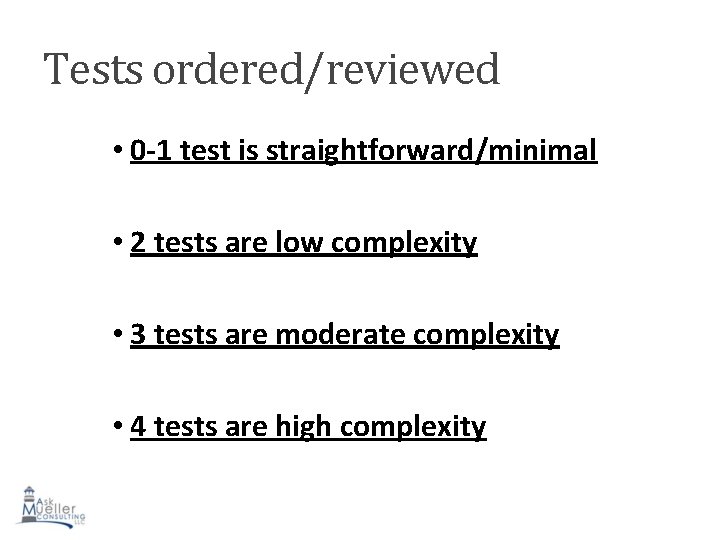
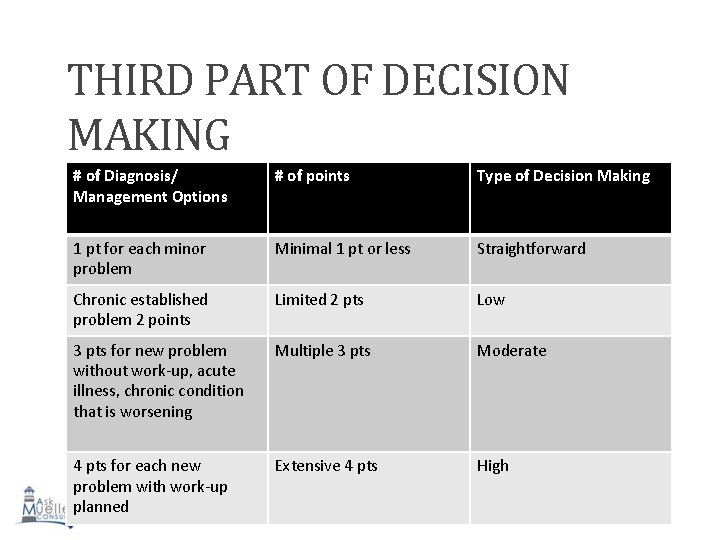
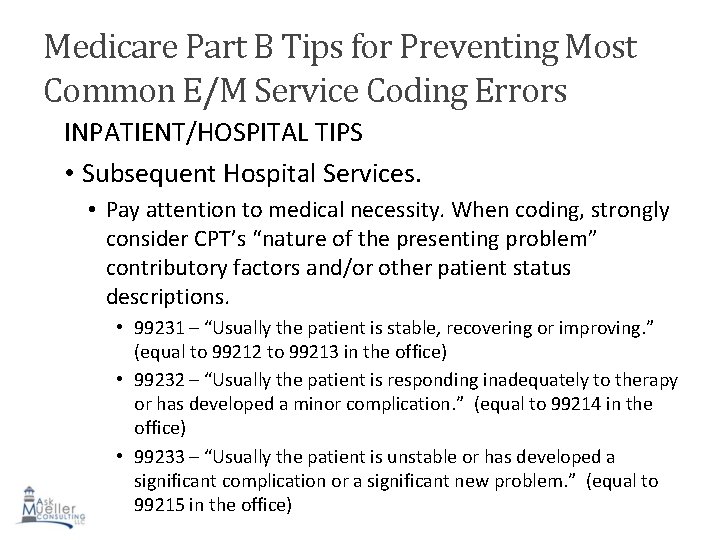
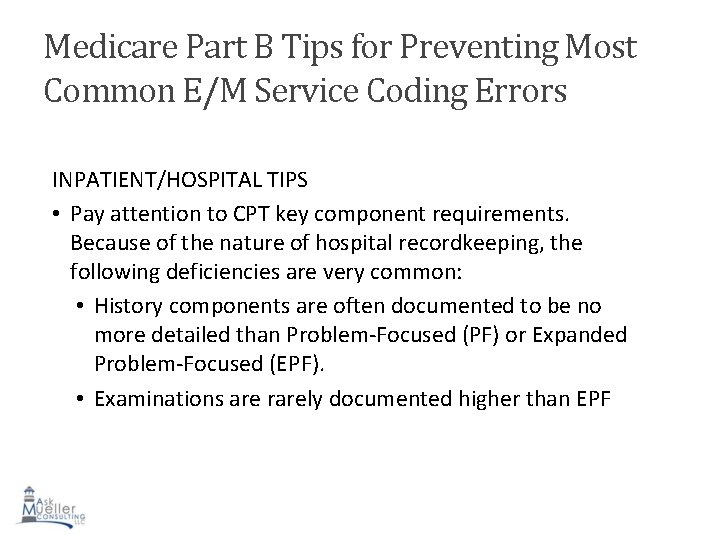
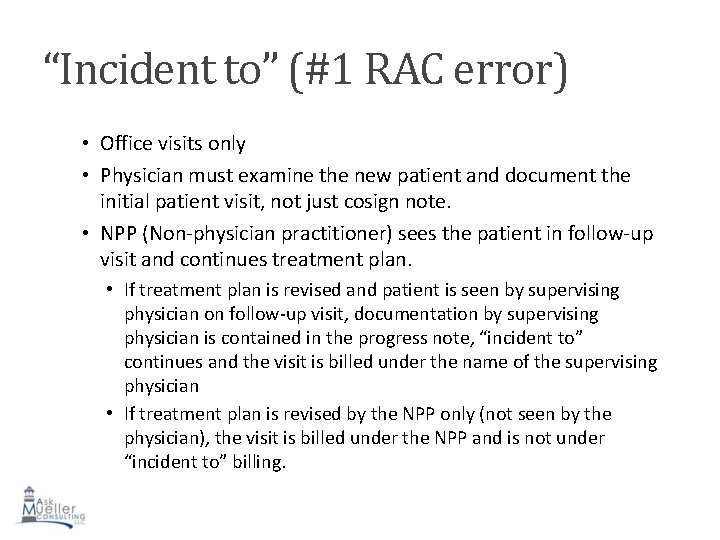
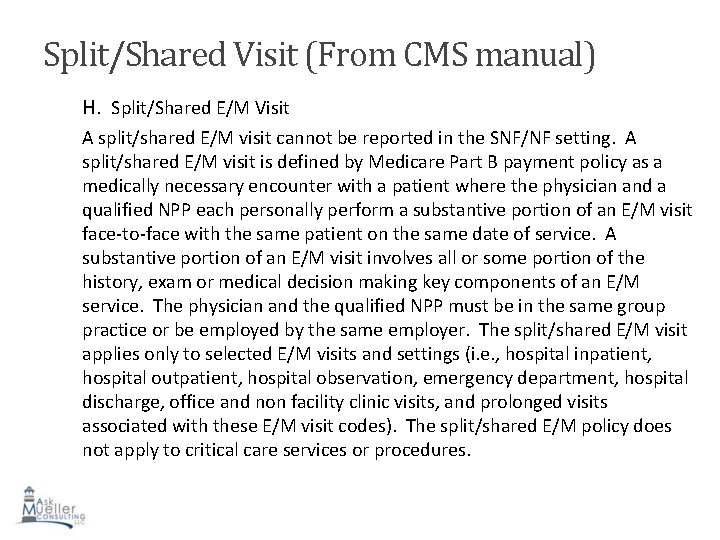
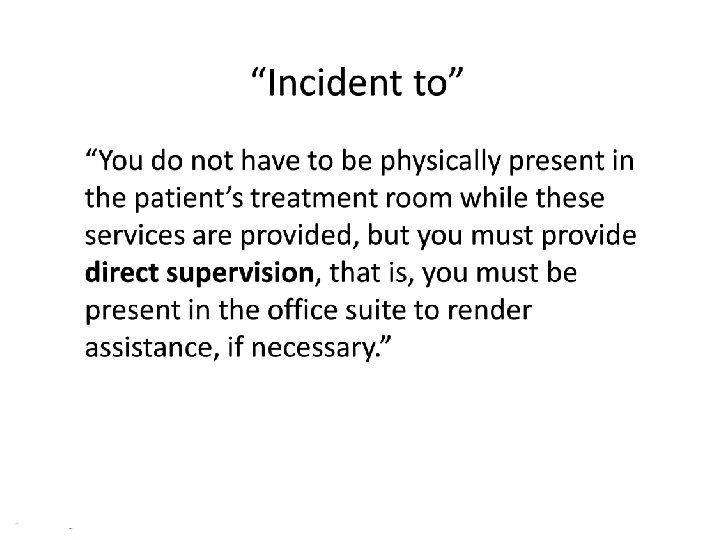
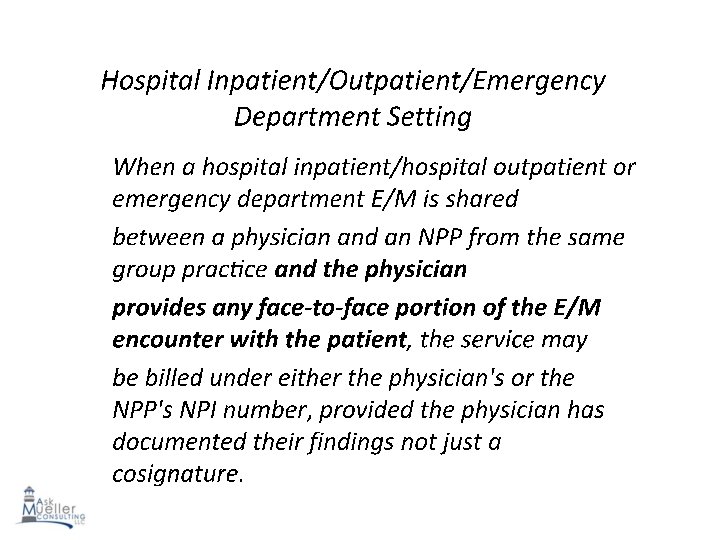
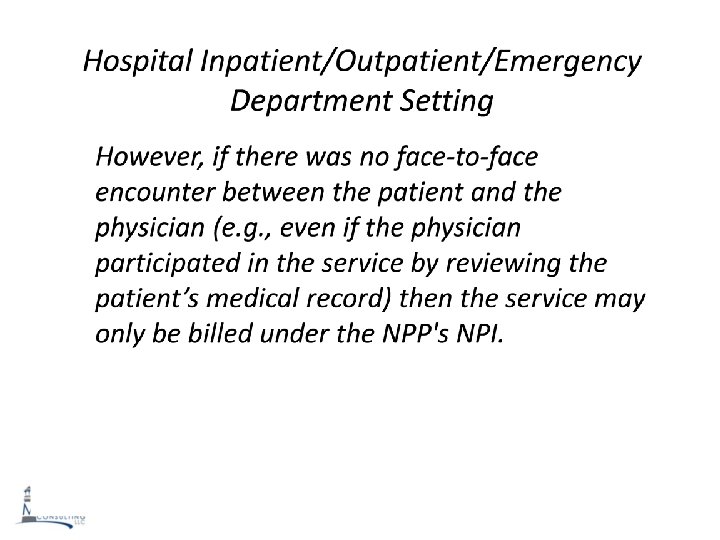
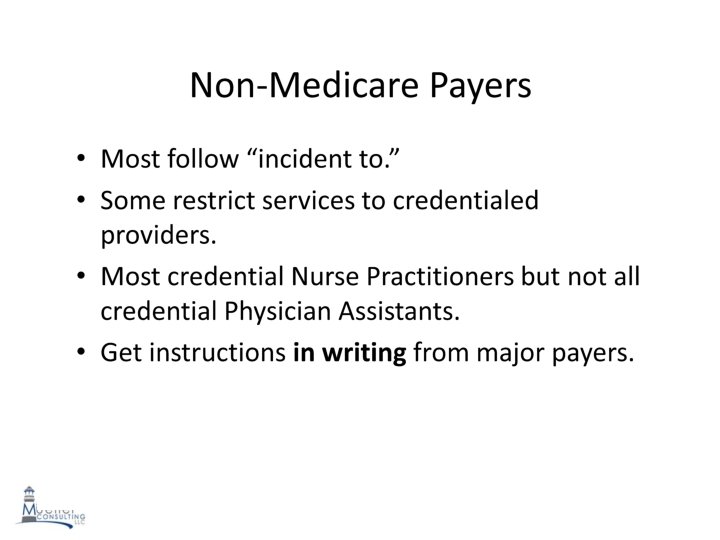
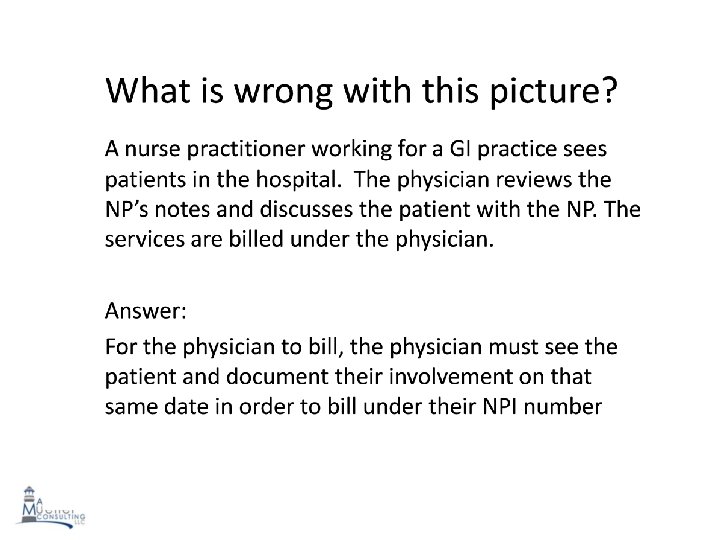
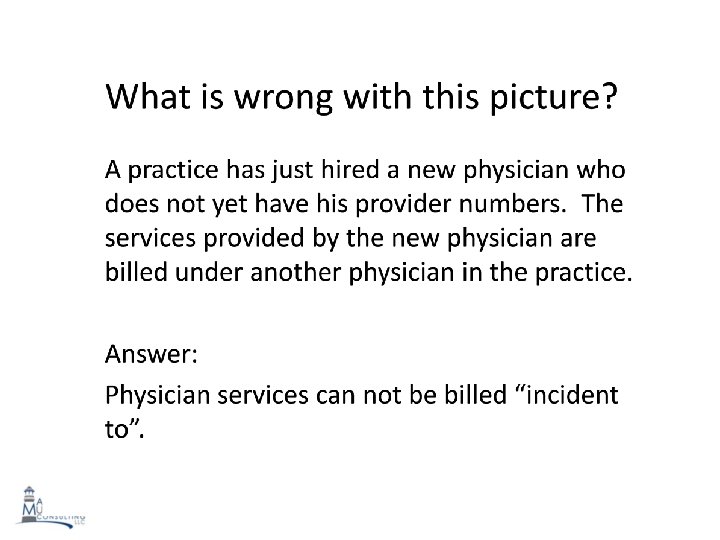
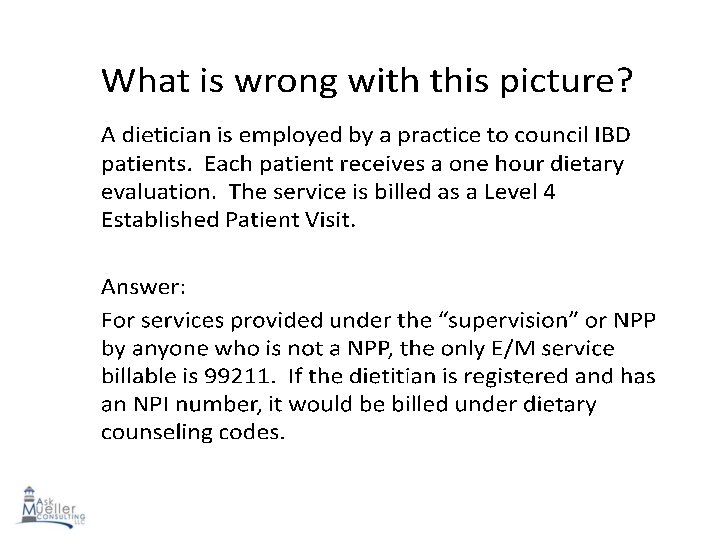
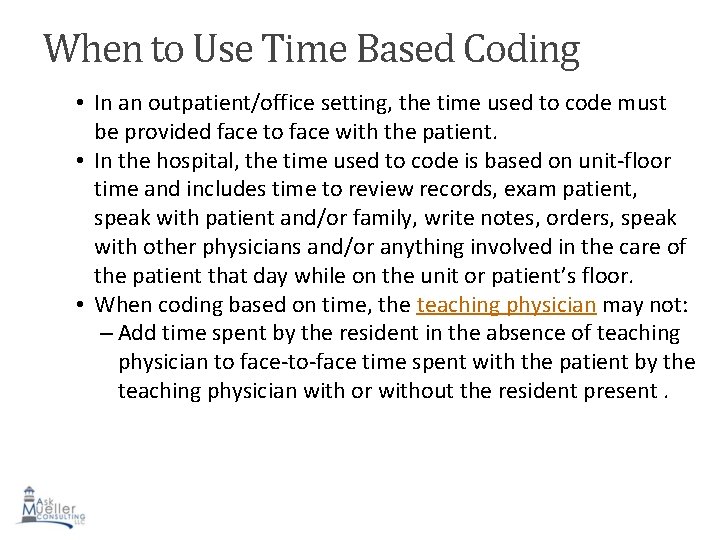
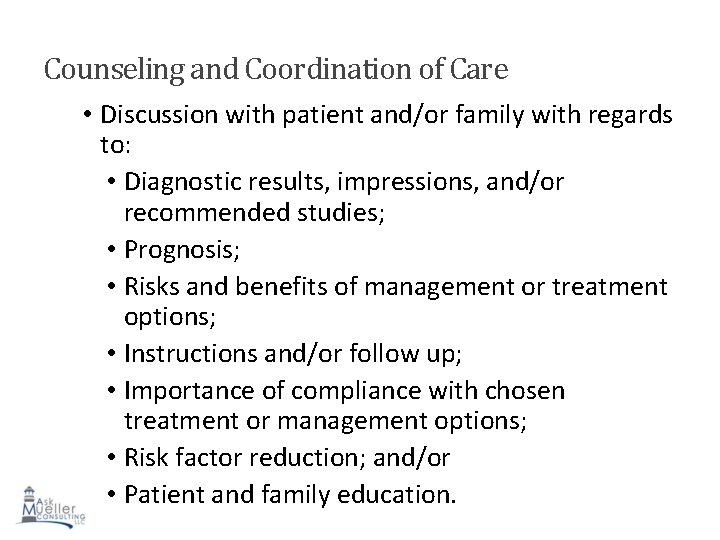
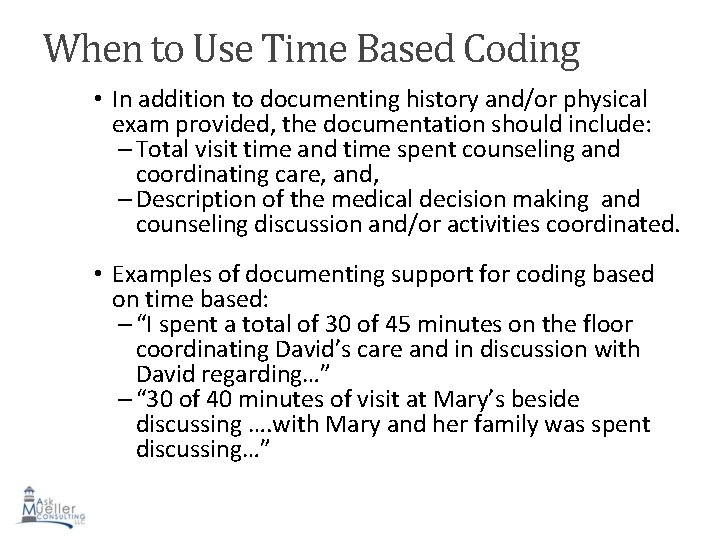
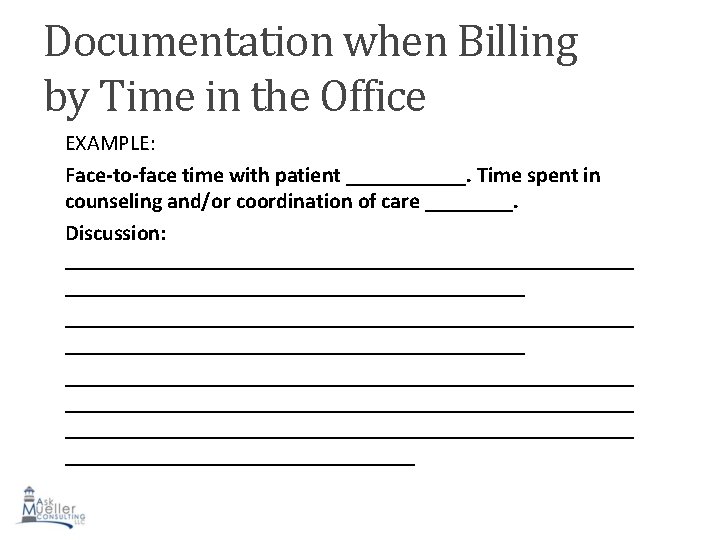
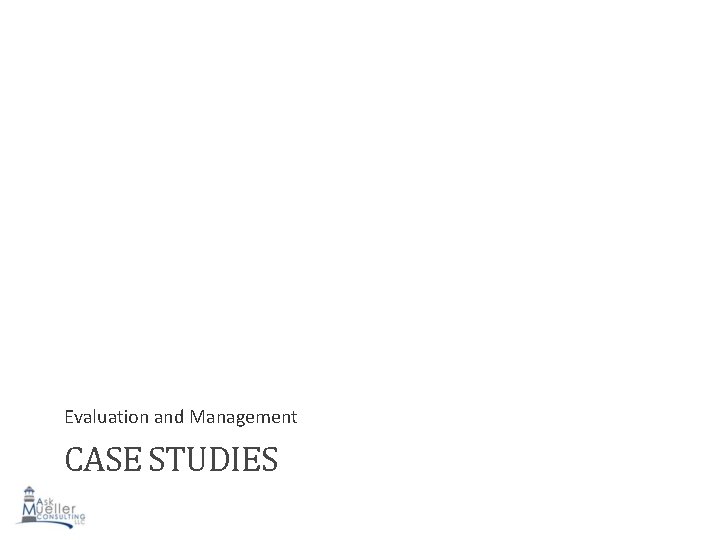

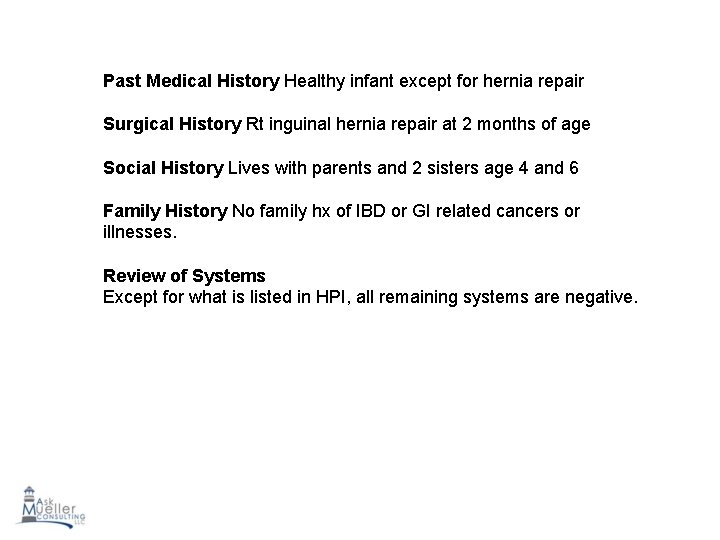
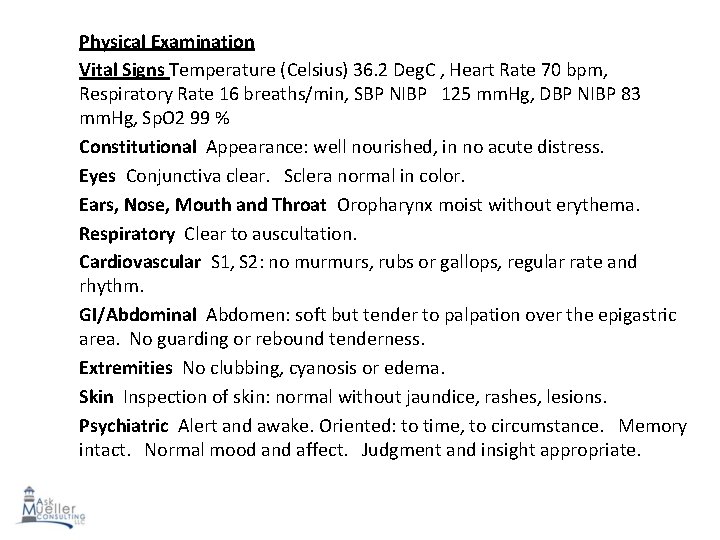
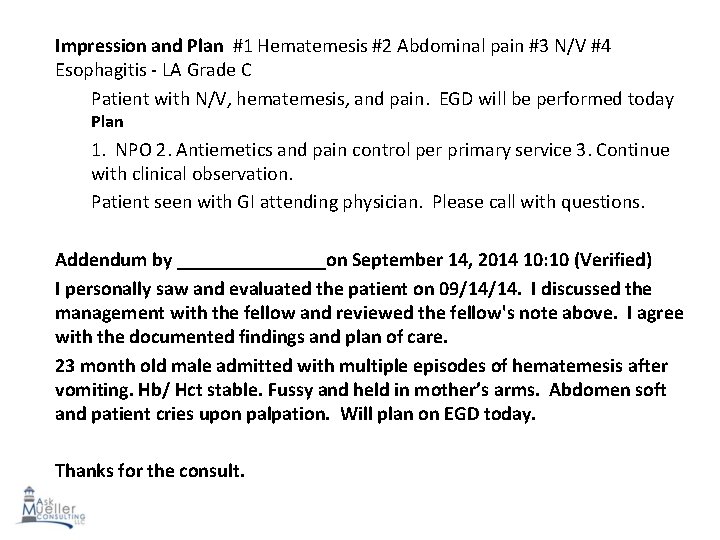


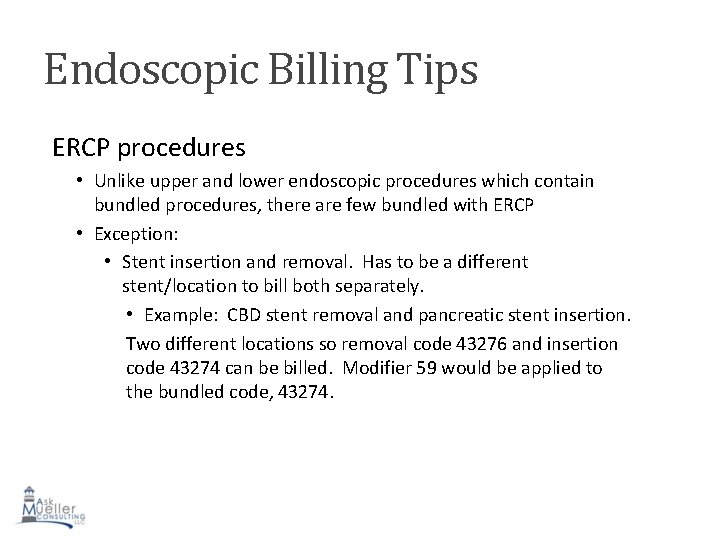
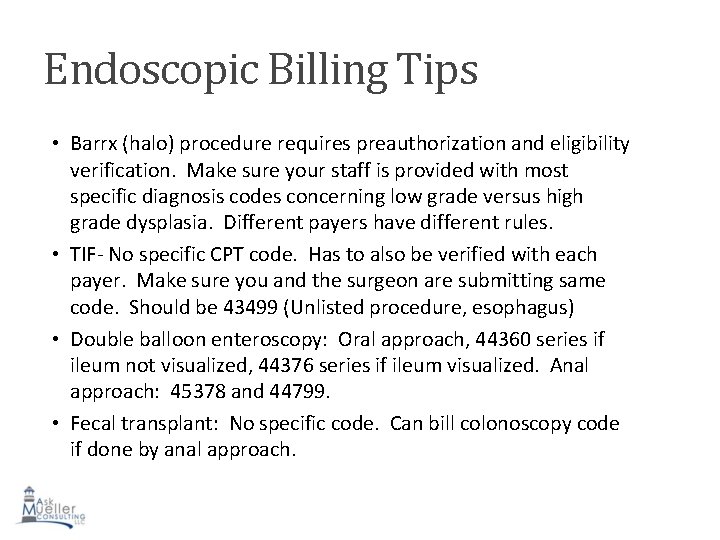
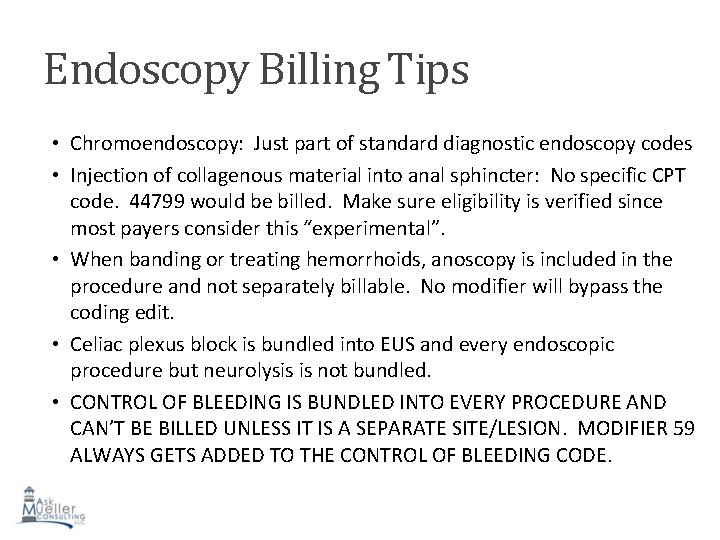
- Slides: 179

2014 -2015 Coding and Compliance Update for Pediatric Gastroenterology Presented by: Kathleen Mueller, RN, CPC, CCS-P, CMSCS, CGCS, PCS ASKMUELLER Consulting, LLC NASPGHAN Hilton Atlanta, GA October 25, 2014

Credentials and Organizations • American Academy of Professional Coders • American Health Care Information Management Association • American Gastroenterological Association Member, Speaker and Columnist • American Society for Gastrointestinal Endoscopy Columnist • Illinois Nurses Association • NASPGHAN Speaker and Columnist • Professional Association of Healthcare Coding Specialists • Seminar Leader for Mc. Vey Associates, Inc.

Presenter: • Kathleen A. Mueller, RN, CPC, CCS-P, CMSCS, PCS • President, Askmueller Consulting, LLC • 204 E Locust St • Lenzburg, IL 62255 • 573. 332. 8348 • E-mail: kathy@askmuellerconsulting. com, • https: //www. askmuellerconsulting. com

2015 CPT for Pediatric GI • You got your 2015 CPT book, hopefully? You opened it, didn’t you? • You looked to the GI chapter and saw Esophagoscopy, one change, not much with EGD and ERCP • Next, enteroscopy, one major change. Now I really have to talk to my doctors. • Then the lower endoscopy section, forget just a talk, we have to do a conference. Major changes and then there is one huge error in the CPT book that will be amended in a separate attachment from CPT, but when? • Oh, yeah, forgot about some new E&M codes. Might apply to you but be prepared to create a log and it will be “audit friendly”. • Modifier 59 vs the X modifiers, Now what?

Esophagoscopy • 43180 Esophagoscopy, rigid, transoral with diverticulectomy of hypopharynx or cervical esophagus (eg, Zenker’s diverticulum), with cricopharyngeal myotomy, includes use of telescope or operating microscope and repair, when performed

Endoscopy Small Intestine (enteroscopy) • Antegrade transoral small intestinal endscopy (enteroscopy) is defined by the most distal (extensive) segment of small intestine that is examined. Codes 44360 -44373 are endoscopic procedures to visualize the esophagus through the jejunum using antegrade approach (down from the mouth). Codes 44376 -44379 are endoscopic procedures to visualize the esophagus through the ileum using antegrade approach. If the endoscope can’t be advanced at least 50 cm beyond the pylorus, report EGD. If the endoscope is advanced at least 50 cm beyond the pylorus but only into the jejunum, see 44360 -44373. • To report retrograde exam of the small intestine via anus or colon stoma, use 44799, unlisted procedure, intestine.

Lower Endoscopy Definitions • Proctosigmoidoscopy is the examination of the rectum and may include examination of a portion of the sigmoid colon • Sigmoidoscopy is the examination of the entire rectum, sigmoid colon and may include examination of a portion of the descending colon • Colonoscopy is the examination of the entire colon, from the rectum to the cecum, and may include examination of the terminal ileum or small intestine proximal to an anastomosis • Colonoscopy through stoma is the examination of the colon, from the colostomy stoma to the cecum or colon-small intestine anastomosis, and may include examination of the terminal ileum or small intestine proximal to an anastomosis

Lower Endoscopy Definitions • When performing a diagnostic or screening endoscopic procedure on a patient who is scheduled and prepared for a total colonoscopy, if the physician is unable to advance the colonoscope to the cecum or colon-small intestine anastomosis due to unforeseen circumstances, report 45378 (colonoscopy) or 44388 (colonoscopy through stoma) with modifier 53 and provide appropriate documentation. • If therapeutic colonoscopy (44389 -44407, 45379, 45380, 45381, 45382, 45384, 45388, 45398) is performed and does not reach the cecum or colon-small intestine anastomosis, report the appropriate therapeutic colonoscopy code with modifier 52 and provide appropriate documentation.

Lower Endoscopy Definitions CPT Error: Report flexible sigmoidoscopy (45330 -45347) for endoscopic examination during which the endoscope is not advanced beyond the splenic flexure THIS IS RIGHT BELOW THE INSTRUCTION TO ADD THE 52 AND 53 MODIFIER PARAGRAPHS AND CONTRADICTS THE PREVIOUS INSTRUCTION. CPT IS GOING TO RELEASE A FIX TO THIS PARAGRAPH INDICATING THAT THE INTENT WOULD BE A FLEXIBLE SIGMOIDOSCOPY.

Lower Endoscopy Definitions • Report ileoscopy through stoma (44380 -44384) for endoscopy examination of a patient who has an ileostomy. • Report colonoscopy through stoma (44388 -44408) for endoscopic exam of a patient who has undergone segmental resection of the colon (eg, hemicolectomy, sigmoid colectomy, low anterior resection) and has a stoma • Report proctosigmoidoscopy, sigmoidoscopy or anoscopy, as appropriate for endoscopic exam of a defunctionalized rectum or distal colon in a patient who has undergone colecotmy, in addition to colonoscopy through stoma or ileoscopy through stoma, if appropriate • Report flexible sigmoidoscopy (45330 -45347) for exam of a patient who has undergone resection of the colon proximal to the sigmoid (subtotal colectomy) and has ileo-sigmoid or ileo-rectal anastomosis)

Lower Endoscopy Definitions • Report pouch endoscopy codes (44385 -44386) for endoscopic examination of a patient who has undergone resection of colon with ileo-anal anastomosis (eg, J-pouch) • Report colonoscopy (45378 -45398) for endoscopic examination of a patient who has undergone segmental resection of the colon (eg, hemicolectomy, sigmoid colectomy, low anterior resection) • THE COLONOSCOPY DECISION TREE IS ALSO INCORRECT AND PLEASE IGNORE UNTIL THE CORRECTION IS RELEASED.

Ileoscopy • 44381 Ileoscopy through stoma with transendoscopic balloon dilation • 44383 DELETED • 44384 with placement of endoscopic stent (includes pre and post dilation and guide wire passage, when performed

Pouchoscopy • Revision in description of the procedure: • 44385 now says: Endoscopic evaluation of small intestinal pouch, (eg, Kock pouch, ileal reservoir (S or J pouch); diagnostic • 44386 with biopsy, single or multiple

Colonoscopy Through Stoma New Codes: • 44001 with ablation of tumor(s), polyp(s), or other lesions(s) (includes pre- and post-dilation and guide wire passage, when performed. • 44002 with endoscopic stent placement (includes pre- and post-dilation and guide wire passage, when performed • 44003 with endoscopic mucosal resection • 44004 with directed submucosal injection(s), any substance • 44005 with transendoscopic balloon dilation • 44006 with endoscopic ultrasound exam, limited to the sigmoid, descending, transverse, or ascending colon and cecum and adjacent structures

Colonoscopy Through Stoma • 44007 with transendoscopic ultrasound guided intramural or transmural (FNA/biopsy(s)), includes EUS limited to the sigmoid, descending, transverse or ascending colon and cecum and adjacent structures • 44008 with decompression (for pathologic distention)(eg, volvulus, megacolon), including placement of decompression tube, when performed

Flexible Sigmoidoscopy Deleted Code: 45339 New Codes: • 45346 with ablation of tumor(s), polyp(s), or other lesions(s) (includes pre- and post-dilation and guide wire passage, when performed. • 45347 with endoscopic stent placement (includes pre- and post-dilation and guide wire passage, when performed • 45349 with endoscopic mucosal resection • 45350 with band ligation(s)(eg, hemorrhoids) • (Do not report with 46221) • (Do not report more than once per session)

Colonoscopy • Deleted codes: 45383, 45387 New Codes: • 45388 with ablation of tumor(s), polyp(s), or other lesions(s) (includes pre- and post-dilation and guide wire passage, when performed. • 45389 with endoscopic stent placement (includes pre- and post-dilation and guide wire passage, when performed • 45390 with endoscopic mucosal resection • 45393 with decompression (for pathologic distention)(eg, volvulus, megacolon), including placement of decompression tube, when performed

Colonoscopy • 45398 with band ligation(s)(eg, hemorrhoids) • (Do not report with 46221) • (Do not report more than once per session)

Anoscopy New Codes • 46601 diagnostic, with high-resolution magnification (HRA)(eg, colposcope, operating microscope) and chemical agent enhancement, including collection of specimen(s) by brushing or washing, when performed. • 46607 with high-resolution magnification (HRA)(eg, colposcope, operating microscope) and chemical agent enhancement, with biopsy, single or multiple

Unlisted Procedures • Revised code: 44799 : Unlisted procedure SMALL intestine • New code: 45399: Unlisted procedure, COLON

Other GI Procedures • 91200 Liver elastography, mechanically induced shear wave (eg, vibration), without imaging, with interpretation and report

Chronic and Complex Care Management Services This is really just a short synopsis. There are more than 3 full pages in the CPT book describing these codes in much more detail. Please look into the CPT book for more information. 99490 Chronic care management services, at least 20 minutes of clinical staff time directed by a physician or other qualified health care professional, per calendar month, with the following required elements: • Multiple (2 or more) chronic conditions expected to last at least 12 months, or until the death of the patient • Chronic conditions place the patient at significant risk of death, acute exacerbation/decompensation, or functional decline • Comprehensive care plan established , implemented, revised, or monitored.

Chronic and Complex Care Management Services 99487 (Revision) Complex chronic care management services, with the following required elements: • Multiple (2 or more) chronic conditions expected to last at least 12 months, or until the death of the patient • Chronic conditions place the patient at significant risk of death, acute exacerbation/decompensation, or functional decline • Establishment or substantial revision of a comprehensive care plan • Moderate or high complexity decision making • 60 minutes of clinical staff time directed by a physician or other qualified health care professional

Chronic and Complex Care Management Services 99488 is DELETED.

Modifier 59 • No change at all in the description of modifier 59. However, there is a note at the end of the paragraph (See also page 684, Level II HCPCS National Modifiers listing) • • XE XS XP XU Separate Encounter Separate Structure Separate Practitioner Unusual Non-Overlapping Service AT THIS TIME, THE IMPLEMENTATION DATE IS JANUARY 5, 2015, FOR CMS BUT THIS IS UNDERGOING ANOTHER MEETING IN MID-OCTOBER TO DISCUSS THE IMPLICATIONS FOR GI. THIS MAY BE DELAYED YET.

Category III Codes New Code • 0377 T Anoscopy with directed submucosal injection of bulking agent for fecal incontinence

Physician Fee Schedule • Physicians are scheduled to receive a 25 percent payment cut on Jan. 1, 2015 unless Congress intervenes. MGMA is conducting a brief Legislative and Executive Advocacy Response Network (LEARN) member poll regarding the impact Medicare physician payment cuts may have on medical practices. Your response is critical to enhance MGMA’s advocacy efforts to get Congress to repeal this flawed payment system. If you are MGMA members, please log-in and respond. Log-in to AGA, ASGE, and ACG for further updates and links. 27

RAC (Recovery Audit Contractors) TOP 3 affecting GI practices • Medical Necessity- Documentation not supporting the level of service provided in the outpatient setting • I am seeing multiple practices and answering multiple questions on RAC issues. If your practice has not yet had some type of internal audit done, it is definitely not too late • E/M Billed During Global Periods • Incident-to Errors- Physician assistants and nurse practitioners performing services for a physician but not following billing-specific guidelines related to the physician’s relationship to the patient and the physician’s presence in the office

Other RAC Issues • Date of service does not match date billed • Inappropriate/Inaccurate modifier usage • Signature not present on medical record • Procedure documentation not on medical record • Place of service issues • Locations of lesions removed not properly documented • Method of removal not specified • Improper documentation for indications • Diagnosis code non-specificity

Meaningful Use for Pediatrics Question: Are there specific parameters/categories of MU that apply to Ped GI? from what I understand, MU has many different parameters and many do not apply to what specialists do? Answer: For stage II meaningful use, pediatrics have to choose 6 measures. Listed below is the link that will help you sort through the measures: http: //www. gastro. org/practice/stay-uptodate-on-meaningfuluse-requirements

ECONOMY PROOF YOUR PRACTICE 1. Obtain all demographics including insurance information at time of appointment scheduling. 2. Inform patient and referring office staff that all pertinent records including labs, progress notes, radiologic studies, etc. , are required at time of patient visit or patient may have to be rescheduled. 3. Remind patient of appointment and inform of any no-show fees in your practice policy manual.

ECONOMY PROOF YOUR PRACTICE 4. Verify benefits and eligibility on all patient prior to appointment and inform patient of their responsibilities. The new Affordable Health Care plans contain high deductibles and co-pays. 5. Upon arrival, verify patient demographics and copy insurance information. Verify HIPAA, patient information and practice policy forms have been signed. Obtain copays. Politely inform patients of wait time. Give patient history forms to fill out if office requires this prior to exam area. 6. When bringing patient into exam area, double-check to make sure all forms have been signed. If patient information forms not signed, claims cannot be filed.

ECONOMY PROOF YOUR PRACTICE 7. Obtain or verify history forms have been filled out. Verify allergy status and enter into system or mark on outside of file folders. 8. Preauthorize and verify eligibility when scheduling patients for endoscopic and diagnostic procedures. Inform them of their potential financial responsibilities and attempt to set up payment plans.

ECONOMY PROOF YOUR PRACTICE 9. Upon check-out, make sure co-pays have been collected and/or deductibles have been paid. Ask for payment on unpaid balances. 10. When submitting office charges, make sure diagnosis codes are specific and accurate. If any questions, go back to the billing provider. 11. When submitting procedural charges, verify procedures by reviewing endoscopy reports, assigning appropriate modifiers when required, enter preauthorization numbers, add comments when appropriate to multiple endoscopy charges in field 19, and make sure diagnosis codes match the procedure entered.

ICD-10 -CM Are You Ready?

ICD-10 Overview • ICD-9 is no longer supported by the World Health Organization (WHO) • Majority of other countries have already adapted to ICD-10 • ICD-9 can’t accommodate emerging disease affecting us internationally due to lack of specificity • ICD-10 allows for improved disease management • Fewer rejected claims with ICD-10 • On July 31, 2014, CMS posted that there would be no further delays and the effective date is October 1, 2015. 36

The Comparison ICD-9 ICD-10 14, 000+ codes 90, 000+ codes 3 -5 characters in length 3 -7 characters in length Mostly numeric only (E codes/V codes) Character 1 -Alpha, Character 2 -Numeric, Characters 3 -7 -Alpha or Numeric Lacks detail Very specific Limited space for new codes Flexible for adding new codes (“x” placeholder) 37

ICD-10 Guidelines • Divided into alphabetic index and the tabular list. • Do not code strictly from the alpha-index • Always confirm your code in the tabular list to verify notes, exclusions, digits required • Format and structure • Tabular list contains categories, subcategories and codes. All categories are 3 characters: A 3 character category that has no further subdivision is equivalent to a code. • Subcategories are either 4 or 5 characters. • Codes may be 3, 4, 5, 6 or 7 characters. BOTTOM-LINE: EACH LEVEL OF SUBDIVISION AFTER A CATEGORY IS A SUBCATEGORY AND THE FINAL LEVEL OF SUBDIVISION IS A CODE. YOU ARE ONLY TO REPORT CODES NOT CATEGORIES OR SUBCATEGORIES. YOU HAVE TO REPORT OUT TO THE HIGHEST LEVEL OF SPECIFICITY. • 38

ICD-10 Guidelines Placeholder Character • Placeholder “x” is used to fill in for a code that can be expanded upon in the future. • Usually found in the poisoning, adverse effect and underdosing codes. • Where a placeholder exists, the x must be used in order for the code to be considered a valid code. 39

ICD-10 (Placeholders) • Some codes within ICD-10 assign “X” placeholders for the 4 th, 5 th, and 6 th characters Examples: T 88. 52 XA T 88. 52 XD T 88. 52 XS Failed moderate sedation during procedure, initial encounter Failed moderate sedation during procedure, subsequent encounter Failed moderate sedation during procedure, sequela 40

ICD-10 (7 th Character) • Some codes within ICD-10 have a 7 th character • Most common for Chapter 19 (Injury/Poisoning) • Most categories give a choice of three options for 7 th character: A – initial encounter • Used when the condition or problem is actively being treated during initial encounter (evaluation by new provider) D – Subsequent encounter • Used when the condition or problem is treated during the healing or recovery phase (follow up visits/medication adjustments) S – Sequela encounter • Used for complications or late effects of the condition or problem (chronic) 41

ICD-10 (7 th Character) Examples: Initial Encounter Patient presents to ER for food in esophagus causing swallowing problems: 7 th T 18. 128 Food in esophagus causing other injury Since this is the first encounter, A is added: T 18. 128 A Subsequent Encounter • Patient had ERCP with exchange of bile duct stent that was displaced. Patient is following up in the office today and is doing well. 7 th T 85. 520 Displacement of bile duct prosthesis 42 Since this was a subsequent encounter, D is added: T 85. 520 D

ICD-10 (7 th Character) Examples: Sequela Encounter Patient seen in hospital for elevated transaminase due to intentional acetaminophen overdose: Primary diagnosis would be: R 74. 8 Nonspecific elevation of levels of transaminase and lactic acid dehydrogenase (LDH) 7 th T 39. 1 X 2 Poisoning by 4 -Aminophenol derivatives, intentional self-harm Since this was a sequela, S is added: T 39. 1 X 2 S 43

Abbreviations • Alphabetic index: NEC NOS “Not elsewhere classifiable This represents “other specified”. When a specific code is not available for a condition, the Alphabetic Index directs the coder to the “other specified” code in the Tabular List. “Not otherwise specified” This means unspecified. • Tabular List: NEC NOS “Not elsewhere classifiable This represents “other specified”. When a specific code is not available for a condition, the Tabular List includes an NEC entry under a code to identify the code as the “other specified” code. “Not otherwise specified” 44 This means unspecified.

ICD-9 versus ICD-10 Right upper quadrant abdominal pain ICD-9: 789. 01 ICD-10: R 10. 11 same Vomiting ICD-9: 787. 03 ICD-10: R 11. 11 without nausea R 11. 12 projectile RLQ abdominal tenderness ICD-9: 789. 63 ICD-10: R 10. 813 same R 10. 823 rebound Failure to thrive ICD-9: 783. 41 same ICD-10: P 92. 6 newborn 45

ICD-9 versus ICD-10 ICD-9 CM Description ICD-10 CM 271. 3 Intestinal Disaccharide E 74. 39 deficiencies None Lactose intolerance, unspec E 73. 9 Congenital lactase deficiency E 73. 0 Secondary lactase deficiency E 73. 1 Other lactose intolerance E 73. 8 V 15. 02 Allergy to milk products Z 91. 011 None Food additives allergy Z 91. 02 None Person consulting for test Z 71. 2 findings

ICD-9 versus ICD-10 Benign neoplasm of colon (colon polyps) ICD-9: 211. 3 ICD-10: D 12. 0 cecum D 12. 1 appendix D 12. 2 ascending colon D 12. 3 transverse colon D 12. 4 descending colon D 12. 5 sigmoid colon D 12. 6 colon, unspecified Adenomatosis of colon Polyposis (hereditary) of colon Excludes 1: inflammatory polyp of colon (K 51. 4 -) polyp of colon NOS (K 63. 5) 47

ICD-10 Structure ICD-10 code format □□□ Category Etiology, anatomical site, severity □ 7 th character Alphabetic Index is divided into three sections: • Section 1 Index to Diseases and Nature of Injury (Neoplasm Table and Drug/Chemical Table) • Section 2 Index to External Causes • Section 3 Table of Drugs and Chemicals (Note addition of Underdosing) 48

ICD-10 Structure Tabular List Chapter 1 Chapter 2 Chapter 3 Chapter 4 Chapter 5 Chapter 6 Chapter 7 Chapter 8 Chapter 9 Chapter 10 Certain Infectious and Parasitic Diseases (A 00 -B 99) Neoplasms (C 00 -D 49) Diseases of Blood/Blood forming organs/Immune mechanisms (D 50 -D 89) Endocrine, Nutritional and Metabolic Diseases (E 00 -E 90) E 08 -E 14 Diabetes mellitus Mental and Behavioral Disorders (F 01 -F 99) Diseases of the Nervous System (G 00 -G 99) Disorder of Eye and Adnexa (H 00 -H 59) Diseases of Ear and Mastoid Process (H 60 -H 95) Diseases of Circulatory System (I 00 -I 99) I 10 -I 15 Hypertensive Diseases of Respiratory System (J 00 -J 99) 49

ICD-10 Structure Tabular List (continued) Chapter 11 Diseases of Digestive System (K 00 -K 94) Chapter 12 Diseases of Skin and Subcutaneous Tissue (L 00 -L 99) Chapter 13 Diseases of Musculoskeletal System and Connective Tissue (M 00 -M 99) Chapter 14 Diseases of Genitourinary System (N 00 -N 99) Chapter 15 Pregnancy, Childbirth and Puerperium (O 00 -O 99) Chapter 16 Conditions originating in Perinatal Period (P 00 -P 96) Chapter 17 Congenital Malformations, Deformations/Chromosomal Abnormalities (Q 00 -Q 99) Chapter 18 Symptoms, Signs, Abnormal Clinical & Laboratory Findings (R 00 -R 99) Chapter 19 Injury, Poisoning & other Consequences External Cause (S 00 -T 88) Chapter 20 External Causes of Morbidity (V 01 -Y 98) (OLD E CODES) 50 Chapter 21 Factors Influencing Health (Z 00 -Z 99)(OLD V CODES)

Infectious and Parasitic Diseases (A 00 -B 99) Contains following blocks: A 15 -A 19 Intestinal infectious diseases A 15 -A 19 Tuberculosis A 20 -A 28 Certain zoonotic bacterial diseases A 30 -A 49 Other bacterial diseases A 50 -A 64 Infections with a sexual mode of transmission A 65 -A 69 Other spirochetal diseases A 70 -A 74 Other diseases caused by chlamydiae A 75 -A 79 Rickettsioses A 80 -A 89 Viral infections of the central nervous system A 90 -A 99 Arthropod-borne viral fevers and viral hemorrhagic 51 fevers

Infectious and Parasitic Diseases (A 00 -B 99) A 04. 7 - Enterocolitis due to Clostridium Difficile Foodborne intoxication by Clostridium Difficile Pseudomembranous colitis A 09 – Infectious Colitis Infectious colitis NOS Infectious enteritis Infectious Gastroenteritis NOS EXCLUDE S 1 colitis NOS (K 52. 9) diarrhea NOS (R 19. 7) enteritis NOS (K 52. 9) gastroenteritis NOS (K 52. 9) noninfectious gastroenteritis and colitis, unspecified (K 52. 9) 52

Infectious and Parasitic Diseases (A 00 -B 99) • B 00 -B 09 • • • B 10 B 15 -B 19 B 20 B 25 -B 34 B 35 -B 49 B 50 -B 64 B 65 -B 83 B 85 -B 89 B 90 -B 94 B 95 -B 97 B 99 Viral infections characterized by skin and mucous membrane lesions Other human herpes viruses Viral hepatitis Human immunodeficiency virus (HIV) disease Other viral diseases Mycoses Protozoal diseases Helminthiases Pediculosis, acariasis and other infestations Sequalae of infectious and parasitic diseases Bacterial and viral infectious agents 53 Other infectious diseases

Infectious and Parasitic Diseases (A 00 -B 99) Viral Hepatitis (B 15 -B 19) sequalae of viral hepatitis (B 94. 2) EXCLUDE S 1 cytomegaloviral hepatitis (B 25. 1) EXCLUDE S 2 herpes viral [herpes simplex] hepatitis (B 00. 81) • 4 th B 18 Chronic viral hepatitis B 18. 0 B 18. 1 B 18. 2 B 18. 8 B 18. 9 Chronic viral hepatitis B with delta-agent Chronic viral hepatitis B without delta-agent Chronic (viral) hepatitis B Chronic viral hepatitis C Other chronic viral hepatitis Chronic viral hepatitis, unspecified 54

Neoplasms (C 00 -D 49) • • • C 00 -C 14 C 15 -C 26 C 30 -C 39 C 40 -C 41 C 43 -C 44 C 45 -C 49 C 50 C 51 -C 58 C 60 -C 63 C 64 -C 68 C 69 -C 72 Malignant neoplasms of lip, oral cavity and pharynx Malignant neoplasms of digestive organs Malignant neoplasms of respiratory organs Malignant neoplasms of bone and articular cartilage Malignant and other malignant neoplasms of skin Malignant neoplasms of mesothelial and soft tissue Malignant neoplasms of breast Malignant neoplasms of female genital organs Malignant neoplasms of urinary tract Malignant neoplasms of eye, brain and other parts 55 of central nervous system

Neoplasms (C 00 -D 49) • C 73 -C 75 C 7 A • C 7 B • C 76 -C 80 • C 81 -C 96 • D 00 -D 09 • D 10 -D 36 • D 3 A • D 37 -D 48 • D 49 Malignant neoplasms of thyroid and other endocrine Malignant neuroendocrine tumors Secondary neuroendocrine tumors Malignant neoplasms of ill-defined, other secondary, and unspecified sites Malignant neoplasms of lymphoid, hematopoeietic and related tissue In situ neoplasms Benign neoplasms, except benign neuroendocrine tumors Benign neuroendocrine tumors Neoplasms of uncertain behavior, polycythemia 56 vera and myelodysplastic syndromes Neoplasms of unspecified behavior

Neoplasms (C 00 -D 49) Note: Functional activity All neoplasms are classified in this chapter, whether they are functionally active or not. An additional code from Chapter 4 may be used, to identify functional activity associated with any neoplasm. Translation: If there any metabolic issues documented on pathology, these are to be reported separately. Morphology (Histology) Chapter 2 classifies neoplasms primarily by site, with broad groupings for behavior, malignant, in situ, benign, etc. The table of neoplasms should be used to identify the correct topography code. 57

Neoplasms (C 00 -D 49) Note continued Primary malignant neoplasms overlapping site boundaries A primary malignant neoplasm that overlaps two or more contiguous (next to each other) sites should be classified to the subcategory/code. 8 (overlapping lesion), unless the combination is specifically indexed elsewhere. For multiple neoplasms of the same site that are not contiguous, such as tumors in different locations of the large intestine, codes for each site should be assigned. Malignant neoplasm of ectopic tissue Malignant neoplasms of ectopic tissue are to be coded to the site mentioned, e. g. , ectopic pancreatic malignant neoplasms are coded to pancreas, unspecified (C 25. 9). 58

Neoplasms (C 00 -D 49) 1. Treatment directed at the malignancy If treatment is directed at the malignancy, the malignancy is the primary diagnosis. Any secondary sites would be reported as additional diagnosis. 2. Treatment of secondary site When a patient is seen because of a primary neoplasm with metastasis and treatment is directed toward the secondary site only, the secondary neoplasm is designated as the principal diagnosis. Example: Patient is being seen in consultation for carcinoma metastatic to the liver. Diagnosis would be: C 78. 7 Secondary malignant neoplasm of liver and intrahepatic bile duct 59

Neoplasms (C 00 -D 49) 3. Primary malignancy previously excised When the primary malignancy has previously been excised or eradicated from its site and there is no evidence of any existing primary malignancy, a code from category Z 85, Personal history of malignancy neoplasm, should be used to indicate previous site of malignancy. Any mention of secondary malignancy is coded as secondary malignant neoplasm to that site. The secondary site would be the principal diagnosis with the personal history of malignancy as the secondary diagnosis. 60

Neoplasms (C 00 -D 49) 4. Neoplasms of uncertain behavior are only assigned when histologic confirmation of whether the neoplasm is malignant or benign cannot be made. It should not be used in lieu of waiting for pathology report or just because the lesion “looked” funny. 5. Neoplasms of unspecified behavior are those of unspecified morphology and behavior. NOTE: NEOPLASM IS NOT TO BE USED UNLESS THE GROWTH IS NEOPLASTIC IN NATURE. THE TERM MASS DOES NOT MEAN THE MASS IS NEOPLASTIC. 61

Neoplasms (C 00 -D 49) 4 th C 15 – Malignant neoplasm of esophagus Use additional code to identify: alcohol abuse and dependence (F 10. -) Abdominal – C 15. 5 Cervical – C 15. 3 Distal (third) – C 15. 5 Lower (third) – C 15. 5 Middle (third) – C 15. 4 Overlapping lesion – C 15. 8 Proximal (third) – C 15. 3 Thoracic – C 15. 4 Upper (third) – C 15. 3 C 15. 9 - malignant neoplasm esophagus, unspecified Coding Tips: The neoplasm table in the Alpha index should be referenced first, however, if the histological term is documented such as “adenoma”, that term should be researched to determine whether or not this would be considered a neoplastic process. 62

Diseases of the blood/blood forming organs/ Immune mechanisms (D 50 -D 89) • D 50 -D 53 • D 55 -D 59 • D 60 -D 64 • D 65 -D 69 • D 70 -D 77 • D 78 • D 80 -D 89 Nutritional anemias Hemolytic anemias Aplastic and other anemias and other bone marrow failure syndromes Coagulation defects, purpura and other hemorrhagic conditions Other disorders of blood and blood-forming organs Intraoperative and postprocedural complications of the spleen Certain disorders involving the immune 63 mechanism

Diseases of the blood/blood forming organs/Immune mechanisms (D 50 -D 89) D 62 – Acute posthemorrhagic anemia EXCLUDE S 1 anemia due to chronic blood loss (D 50. 0) blood loss anemia NOS (D 50. 0) congenital anemia from fetal blood loss (P 61. 3) D 63. 0 - Anemia associated with malignancy Coding tips: When the encounter is specifically for the treatment of the anemia due to malignancy, the appropriate code for the malignancy is sequenced primary, followed by D 63. 0 64

Endocrine, Nutritional and Metabolic Diseases (E 00 -E 90) • E 00 -E 07 • E 08 -E 13 • E 15 -E 16 • • E 20 -E 35 E 36 E 40 -E 46 E 50 -E 64 E 65 -E 68 E 70 -E 88 E 89 Disorders of the thyroid gland Diabetes mellitus Other disorders of glucose regulation and pancreatic internal secretion Disorders of other endocrine glands Intraoperative complications of endocrine system Malnutrition Other nutritional deficiencies Overweight, obesity and other hyperalimentation Metabolic disorders Postprocedural endocrine and metabolic 65 complications and disorders, not elsewhere classified.

Endocrine, Nutritional and Metabolic Diseases (E 00 -E 90) 1. Diabetes Mellitus a. Type of diabetes The age of a diabetic is not the sole determining factor, though most type 1 diabetics develop the condition before reaching puberty. For this reason, type 1 diabetes mellitus is also referred to as juvenile diabetes. b. Type of diabetes mellitus not documented If the type of diabetes mellitus is not documented in the medical record, assign E 11. -, Type 2 diabetes mellitus c. Diabetes mellitus and the use of insulin If the documentation in the medical record does not indicate the type of diabetes but that the patient uses insulin, Code E 11. -, Type 2 diabetes and code Z 79. 4, Long term (current) use of insulin 66 should be assigned. Do not code use of insulin is given temporarily to bring the type 2 patient’s blood sugar under control

Endocrine, Nutritional and Metabolic Diseases (E 00 -E 90) 1. Diabetes Mellitus (continued) d. Secondary diabetes mellitus Secondary diabetes is always caused by another condition or even (e. g. , cystic fibrosis, malignancy neoplasm of pancreas, pancreatectomy, adverse effect of drug or poisoning) • Secondary diabetes mellitus due to pancreatectomy For postpancreatectomy diabetes mellitus (lack of insulin due to the surgical removal of all or part of the pancreas), assign code E 89. 1, Postprocedural hypoinsulinemia plus code from category E 13 and a code for subcategory Z 90. 41 -, Acquired absence of pancreas. • Secondary diabetes due to drugs For secondary diabetes due to drugs, utilize codes from poisoning 67 or sequeala poisoning

Endocrine, Nutritional and Metabolic Diseases (E 00 -E 90) E 11. 43 Type 2 diabetes mellitus with diabetic autonomic (poly)neuropathy Type 2 diabetes with diabetic gastroparesis E 11 subcategory: Use addition code to identify any use of insulin Z 79. 4 E 66. 01 Morbid (severe) obesity due to excess calories Excludes 1: morbid (severe) obesity with alveolar hypoventilation (E 66. 2) E 66 subcategory: Use additional code to identify BMI, if known (Z 68. -) 68

Endocrine, Nutritional and Metabolic Diseases (E 00 -E 90) • Malnutrition (E 40 -E 46) intestinal malabsorption (K 90. -) EXCLUDE sequelae of protein-calorie malnutrition (E 64. 0) S 1 nutritional anemias (D 50 -D 53) EXCLUDE starvation (T 73. 0) S 2 4 th degree E 46 E 44 Protein-calorie malnutrition of moderate and mild E 44. 0 Moderate protein-calorie malnutrition E 44. 1 Mild protein-calorie malnutrition Unspecified protein-calorie malnutrition Malnutrition NOS Protein-calorie imbalance NOS nutritional deficiency NOS (E 63. 9) EXCLUDE S 1 69

Endocrine, Nutritional and Metabolic Diseases (E 00 -E 90) • 4 th E 66 Overweight and obesity Code first obesity complicating pregnancy, childbirth and the puerperium, if applicable (O 99. 21 -) Use additional diagnosis code to identify body mass index (BMI), if known (Z 68. -) adiposagenital dystrophy (E 23. 6) EXCLUDE S 1 lipomatosis NOS (E 88. 2) lipomatosis dolorosa [Dercum] (E 88. 2) Prader-Willi syndrome (Q 87. 1) 70

Endocrine, Nutritional and Metabolic Diseases (E 00 -E 90) 5 th E 66. 0 E 66. 1 E 66. 2 E 66. 3 E 66. 8 E 66. 9 Obesity due to excess calories E 66. 01 Morbid obesity due to excess calories EXCLUDE morbid obesity with alveolar S 1 hypoventilation (E 66. 2) E 66. 09 Other obesity due to excess calories Drug induced obesity Use additional code for adverse effect, to identify drug (T 36 -T 50 with 5 th or 6 th character Morbid obesity with alveolar hypoventilation Overweight Other obesity 71 Obesity, unspecified

Mental and Behavioral Disorders (F 01 -F 99) These codes are only to be assigned with provider documentation of a mental or behavioral disorder not just based upon symptoms presented by the patient but by the clinical judgment of the provider. 72

Mental, Behavioral, and Neurodevelopmental Disorders (F 01 -F 99) • F 01 -F 09 • • • Mental disorders due to known physiological conditions F 10 -F 19 Mental and behavioral disorders due to psychoactive substance use F 20 -F 29 Schizophrenia, schitzotypal, delusional, and other non-mood psychotic disorders F 30 -F 39 Mood [affective] disorders F 40 -F 48 Anxiety, dissociative, stress-related, somatoform and other nonpsychotic mental disorders F 50 -F 59 Behavioral syndromes associates with physiological disturbances and physical factors 73 F 60 -F 69 Disorders of adult personality and behavior

Mental, Behavioral, and Neurodevelopmental Disorders (F 01 -F 99) • F 70 -F 79 • F 80 -F 89 • F 90 -F 98 • F 99 Intellectual disabilities Pervasive and specific developmental disorders Behavioral and emotional disorders with onset usually occurring in childhood and adolescence Unspecified mental disorder 74

Mental and Behavioral Disorders (F 01 -F 99) F 10. 229 – Alcohol Dependence with intoxication, unspecified Acute drunkenness (in alcoholism) Excludes 1: alcohol dependence withdrawal (F 10. 23 -) Coding Tips: If use and abuse are both documented, only code abuse. If both abuse and dependence are both documented, only code dependence. If all three use, abuse and dependence are documented, again only code dependence. 75

Mental, Behavioral, and Neurodevelopmental Disorders (F 01 -F 99) • 4 th F 50 EXCLUDE S 1 EXCLUDE Sth 2 5 F 50. 0 Eating disorders anorexia NOS (R 63. 0) feeding difficulties (R 63. 3) polyphagia (R 63. 2) feeding disorder in infancy or childhood (F 98. 2 -) Anorexia nervosa loss of appetite (R 63. 0) EXCLUDE S 1 psychogenic loss of appetite (F 50. 8) F 50. 00 Anorexia nervosa, unspecified F 50. 01 Anorexia nervosa, restricting type F 50. 02 Anorexia nervosa, binge eating/purging type 76 EXCLUDE bulimia nervosa (F 50. 2) S 1

Mental and Behavioral Disorders (F 01 -F 99) F 98. 1 – Encopresis not due to a substance or known physiological condition Functional encopresis Incontinence of feces of nonorganic origin Psychogenic encopresis Use addition code to identify the cause of any coexisting constipation Encopresis NOS (R 15. -) EXCLUDE S 1 77

Disease of the Nervous System (G 00 -G 99) • G 00 -G 09 • G 10 -G 14 • • • G 20 -G 26 G 30 -G 32 G 35 -G 37 G 40 -G 47 G 50 -G 59 G 60 -G 65 • G 70 -G 73 • G 80 -G 83 • G 89 -G 99 Inflammatory diseases of the central nervous system Systemic atrophies primarily affecting the central nervous system Extrapyramidal and movement disorders Other degenerative diseases of the nervous system Demyelinating diseases of the central nervous system Episodic and paroxysmal disorders Nerve, nerve root and plexus disorders Polyneuropathies and other disorders of the peripheral nervous system Diseases of myoneural junction and muscle Cerebral palsy and other paralytic syndromes 78 Other disorders of the nervous system

Disease of the Nervous System (G 00 -G 99) G 47. 33 – Obstructive sleep apnea (adult) (pediatric) EXCLUDE obstructive sleep apnea of newborn (P 28. 3) S 1 G 47. 3 subcategory: Code also any associated underlying condition G 89. 28 – Other chronic postprocedural pain other chronic postoperative pain Coding Tips: There is no time frame when the pain becomes chronic. Routine or expected postoperative pain should not 79 be coded.

Disease of the Nervous System (G 00 -G 99) • 5 th G 93. 4 Other and unspecified encephalopathy alcoholic encephalopathy (G 31. 2) EXCLUDE encephalopathy in diseases classified S 1 elsewhere (G 94) hypertensive encephalopathy (I 67. 4) toxic (metabolic) encephalopathy (G 92) G 93. 40 Encephalopathy, unspecified G 93. 41 Metabolic encephalopathy Septic encephalopathy G 93. 49 Other encephalopathy G 94 Other disorders of brain in diseases classified elsewhere Code first underlying disease Example: Encephalopathy and primary biliary cirrhosis K 74. 5 Primary biliary cirrhosis G 94 Encephalopathy 80

Disease of the Circulatory System (I 00 -I 99) • • • I 00 -I 02 I 05 -I 09 I 10 -I 15 I 20 -I 25 I 26 -I 28 • • I 30 -I 52 I 60 -I 69 I 70 -I 79 I 80 -I 89 • I 95 -I 99 Acute rheumatic fever Chronic rheumatic heart disease Hypertensive diseases Ischemic heart disease Pulmonary heart disease and diseases of pulmonary circulation Other forms of heart disease Cerebrovascular diseases Diseases of arteries, arterioles and capillaries Diseases of veins, lymphatic vessels and lymph nodes, not elsewhere classified Other and unspecified disorders of the circulatory 81 system

Disease of the Circulatory System (I 00 -I 99) 4 th I 12 Hypertensive chronic kidney disease Includes: hypertensive nephropathy nephrosclerosis EXCLUDE hypertension due to kidney disease (I 15. 0, S 1 I 15. 1) renovascular hypertension (I 15. 0) EXCLUDE acute kidney failure (N 17. -) S 2 I 12. 0 Hypertensive chronic kidney disease with stage 5 chronic kidney disease or end stage renal disease Use additional code to identify the stage of chronic kidney disease (N 18. 5, N 18. 6) I 12. 9 Hypertensive chronic kidney disease with stage 1 82 through stage 4 chronic kidney disease

Disease of the Circulatory System (I 00 -I 99) I 25. 2 – Old myocardial infarction Healed myocardial infarction Past myocardial infarction diagnosed by ECG or other investigation, but currently presenting no symptoms I 48. 2 – Chronic atrial fibrillation Permanent atrial fibrillation I 69. 891 – Dysphagia following unspecified cerebrovascular disease Use additional code to identify the type of dysphagia, if known (R 13. 1 -) 83

Disease of the Circulatory System (I 00 -I 99) 4 th I 85 Esophageal varices Use additional code to identify: alcohol abuse and dependence (F 10. -) 5 th I 85. 0 Esophageal varices Idiopathic esophageal varices Primary esophageal varices I 85. 00 Esophageal varices without bleeding I 85. 01 Esophageal varices with bleeding 84

Disease of the Circulatory System (I 00 -I 99) 4 th I 86 Varicose veins of other sites EXCLUDE varicose veins of unspecified sites S 1 retinal varices (H 35. 0 -) EXCLUDE S 2 I 86. 0 I 86. 1 I 86. 2 I 86. 3 I 86. 4 I 86. 8 Sublingual varices Scrotal varices Pelvic varices Vulval varices Gastric varices Varicose veins of other specified sites Varicose ulcer of nasal septum 85

Disease of the Circulatory System (I 00 -I 99) 5 th I 85. 1 Secondary esophageal varices Esophageal varices secondary to alcoholic liver disease Esophageal varices secondary to cirrhosis of liver Esophageal varices secondary to schistosomiasis Esophageal varices secondary to toxic liver disease Code first underlying disease I 85. 10 Secondary esophageal varices without bleeding I 85. 11 Secondary esophageal varices with bleeding 86

Diseases of the Respiratory System (J 00 -J 99) • • J 00 -J 06 J 09 -J 18 J 20 -J 22 J 30 -J 39 J 40 -J 47 J 60 -J 70 J 80 -J 84 • J 85 -J 86 • J 90 -J 94 • J 95 • J 96 -J 99 Acute upper respiratory infections Influenza and pneumonia Other acute lower respiratory infections Other disease of upper respiratory tract Chronic lower respiratory diseases Lung diseases due to external agents Other respiratory diseases principally affecting the interstitium Suppurative and necrotic conditions of the lower respiratory tract Other diseases of the pleura Intraoperative and post procedure complications and disorders of respiratory system, not elsewhere classified Other diseases of the respiratory system 87

Diseases of the Respiratory System (J 00 J 99) 4 th J 44 Other chronic obstructive pulmonary disease (COPD) Includes: asthma with COPD chronic asthma with obstructive bronchitis chronic bronchitis with emphysema chronic obstructive bronchitis Code also type of asthma, if applicable (J 45. -) Use additional code to identify: Exposure to environmental tobacco smoke (Z 77. 22) History of tobacco abuse (Z 87. 891) Occupational exposure to environmental tobacco smoke (Z 57. 31) Tobacco dependence (F 17. -) Tobacco use (Z 72. 0) 88

Diseases of the Respiratory System (J 00 J 99) th 4 J 44 Other chronic obstructive pulmonary disease (COPD) EXCLUDE bronchiectasis (J 47. -) S 1 chronic bronchitis NOS (J 42) emphysema without chronic bronchitis (J 43. -) J 44. 0 COPD with acute lower respiratory infection Use additional code to identify the infection J 44. 1 COPD with acute exacerbation EXCLUDE COPD with acute bronchitis S 2 (J 44. 0) J 44. 9 COPD, unspecified Chronic obstructive airway disease Chronic obstructive lung disease NOS 89

Diseases of the Respiratory System (J 00 J 99) 4 th J 69 Pneumonia due to solids and liquids neonatal aspiration syndrome (P 94. -) postprocedural pneumonitis (J 95. 4) Pneumonitis due to inhalation of food and vomit Aspiration pneumonia due to gastric secretions Code also any associated foreign body in respiratory tract (T 17. -) chemical pneumonitis due to EXCLUDE S 1 anesthesia (J 95. 4) 90 EXCLUDE S 1 J 69. 0

Diseases of the Digestive System (K 00 -K 94) • • • K 00 -K 14 K 20 -K 31 K 35 -K 38 K 40 -K 46 K 50 -K 52 K 55 -K 64 K 65 -K 68 K 70 -K 77 K 80 -K 87 K 90 -K 95 Diseases of oral cavity and salivary glands Diseases of esophagus, stomach and duodenum Diseases of appendix Hernia Noninfective enteritis and colitis Other diseases of intestines Diseases of peritoneum and retroperitoneum Diseases of liver Disorder of gallbladder, biliary tract and pancreas Other diseases of the digestive system 91

Diseases of the Digestive System (K 00 -K 94) 4 th K 20 Esophagitis Use additional code to identify: alcohol abuse and dependence (F 10. -) EXCLUDE erosion of esophagus (K 22. 1 -) S 1 esophagitis with GERD (K 21. 0) reflux esophagitis (K 21. 0) ulcerative esophagitis (K 22. 1 -) EXCLUDE eosinophilic gastritis or gastroenteritis S 2 (K 52. 81) K 20. 0 Eosinophilic esophagitis K 20. 8 Other esophagitis Abscess of esophagus K 20. 9 Esophagitis, unspecified 92

Diseases of the Digestive System (K 00 -K 94) 4 th K 21 Gastro-esophageal reflux disease (GERD) EXCLUDE newborn esophageal reflux (P 78. 83) S 1 K 21. 0 GERD with esophagitis Reflux esophagitis K 21. 9 GERD without esophagitis Esophageal reflux NOS 93

Diseases of the Digestive System (K 00 -K 94) 5 th K 22. 7 Barrett's esophagus Barrett’s Esophagus Barrett’s disease EXCLUDE Barrett’s ulcer (K 22. 1) S 1 Malignant neoplasm of esophagus (C 15. -) K 22. 70 Barrett’s Esophagus without dysplasia (Barrett’s Esophagus NOS) 6 th K 22. 71 Barrett's esophagus with dysplasia K 22. 710 Barrett’s Esophagus with low grade dysplasia K 22. 711 Barrett’s Esophagus with high grade dysplasia 94 K 22. 719 Barrett’s Esophagus with dysplasia, unspecified

Diseases of the Digestive System (K 00 -K 94) Noninfective enteritis and colitis (K 50 -K 52) 4 th K 50 Includes: granulomatous enteritis EXCLUDE irritable bowel syndrome (K 58. -) S 1 Use additional code to identify manifestations, such as pyoderma gangrenosum (L 88) 5 th K 50. 1 Crohn’s disease of large intestine Crohn’s disease of colon Crohn’s disease of large bowel Crohn’s disease of rectum Granulomatous colitis Regional colitis EXCLUDE Crohn’s disease of both small and 95 S 1 large intestine (K 50. 8)

Diseases of the Digestive System (K 00 -K 94) K 50. 10 Crohn’s disease of large intestine without complications 5 th K 50. 11 Crohn’s disease of large intestine with complications K 50. 111 Crohn’s disease of large intestine with bleeding K 50. 112 Crohn’s disease of large intestine with obstruction K 50. 113 Crohn’s disease of large intestine with fistula K 50. 114 Crohn’s disease of large intestine with abscess K 50. 118 Crohn’s disease of large intestine with other complications K 50. 119 Crohn’s disease of large intestine with unspecified complications 96

Diseases of the Digestive System (K 00 -K 94) 4 th K 58 – Irritable Bowel Syndrome Includes: irritable colon, spastic colon K 58. 0 – Irritable bowel syndrome with diarrhea K 58. 9 – Irritable bowel syndrome without diarrhea Irritable bowel syndrome NOS K 76. 6 – Portal Hypertension Use additional code for any associated complications, such as: portal hypertensive gastropathy (K 31. 89) 97

Diseases of the Digestive System (K 00 -K 94) 4 th K 64 - Hemorrhoids and perianal venous thrombosis Includes: piles hemorrhoids complicating childbirth and the puerperium (O 87. 2) hemorrhoids complicating pregnancy (O 22. 4) K 64. 0 – First degree hemorrhoids; grade/stage I; hemorrhoids (bleeding) without prolapse outside of anal canal K 64. 1 – Second degree hemorrhoids; grade/stage II; hemorrhoids (bleeding) that prolapse with straining, but retract spontaneously K 64. 2 – Third degree hemorrhoids; grade/stage III; hemorrhoids (bleeding) that prolapse with straining and require manual replacement back inside anal canal K 64. 3 – Fourth degree hemorrhoids; grade/stage IV; hemorrhoids 98 (bleeding) with prolapsed tissue that cannot be manually replaced EXCLUDE S 1

Diseases of the Digestive System (K 00 -K 94) K 92 Other diseases of digestive system EXCLUDE neonatal gastrointestinal hemorrhage S 1 (P 54. 0 -P 54. 3) K 92. 0 Hematemesis K 92. 1 Melena EXCLUDE occult blood in feces (R 19. 5) S 1 K 92. 2 Gastrointestinal hemorrhage, unspecified Gastric hemorrhages NOS Intestinal hemorrhage EXCLUDE acute hemorrhagic gastritis S 1 hemorrhage of anus and rectum angiodysplasia of stomach with hemorrhage 99 diverticular disease with hemorrhage gastritis and duodenitis with hemorrhage

Diseases of the Genitourinary System (N 00 -N 99) • • • N 00 -N 08 N 10 -N 16 N 17 -N 19 N 20 -N 23 N 25 -N 29 N 30 -N 39 N 40 -N 53 N 60 -N 65 N 70 -N 77 N 80 -N 98 N 99 Glomerular diseases Renal tubulo-interstitial diseases Acute kidney failure and chronic kidney disease Urolithiasis Other disorders of kidney and ureter Other diseases of the urinary system Diseases of male genital organs Disorders of breast Inflammatory diseases of female pelvic organs Noninflammatory disorders of female genital tract Intraoperative and postprocedural complications 100 and disorders of genitourinary system, not elsewhere classified

Diseases of the Genitourinary System (N 00 -N 99) Chronic kidney disease (CKD) 1. ICD-10 classifies CKD based on stages 1 -5 based on low to high. End stage renal disease is assigned when the provider has documented ESRD. 2. Patients who have undergone a kidney transplant may still have some form of kidney disease in the transplanted kidney so the code of CKD plus the code, Z 94. 0, Kidney transplant status would be assigned. 3. Patients with CKD may also suffer from other conditions such as diabetes and hypertension. See the tabular for further clarification. 101

Diseases of the Genitourinary System (N 00 -N 99) 4 th N 18 Chronic kidney disease (CKD) Code first any associated: diabetic chronic kidney disease (E 08. 22, E 09. 22, E 10. 22, E 11. 22, E 13. 22) hypertensive chronic kidney disease (I 12 -, I 13 -) Use additional code to identify kidney transplant status, (Z 94. 0) N 18. 1 CKD, stage 1 N 18. 2 CKD, stage 2 (mild) N 18. 3 CKD, stage 3 (moderate) N 18. 4 CKD, stage 4 (severe) N 18. 5 CKD, stage 5 N 18. 6 End stage renal disease Chronic kidney disease requiring chronic dialysis Use additional code to identify dialysis status (Z 99. 2) 102

Pregnancy, Childbirth and Puerperium (O 00 -O 99) • O 00 -O 08 • O 09 • O 10 -O 16 • O 20 -O 29 • O 30 -O 48 • O 60 -O 77 • O 80, O 82 • O 85 -O 92 • O 94 -O 9 A Pregnancy with abortive outcome Supervision of high risk pregnancy Edema, proteinuria and hypertensive disorders in pregnancy, childbirth and the puerperium Other maternal disorders predominantly related to pregnancy Maternal care related to the fetus and amniotic cavity and possible delivery problems Complications of labor and delivery Encounter for delivery Complications predominantly related to the 103 puerperium Other obstetric conditions, NEC

Pregnancy, Childbirth and Puerperium (O 00 -O 99) Coding Tips: Codes from this chapter are for maternal records only and are never to be used on newborn records. The majority of codes have a final character indicating the trimester of pregnancy: 1 st Trimester: less than 14 weeks 0 days 2 nd Trimester: 14 weeks 0 days to less than 28 weeks 0 days 3 rd Trimester: 28 weeks 0 days until delivery If the pregnancy is incidental to the encounter, then code Z 33. 1 for pregnancy state, incidental should be indicated 104

Pregnancy, Childbirth and Puerperium (O 00 -O 99) 4 th O 21 Excessive vomiting of pregnancy O 21. 0 Mild hyperemesis gravidarum Hyperemesis gravidarum, mild or unspecified, starting before the end of the 20 th week of gestation M O 21. 1 Hyperemesis gravidarum with metabolic disturbance Hyperemesis gravidarum, starting before the end M of the 20 th week of gestation, with metabolic disturbance such as dehydration Hyperemesis gravidarum, starting before the end of the 20 th week of gestation, with metabolic disturbance such as electrolyte imbalance 105

Pregnancy, Childbirth and Puerperium (O 00 -O 99) M O 21. 2 Late vomiting of pregnancy Excessive vomiting starting after 20 completed weeks of gestation. O 21. 8 Other vomiting complicating pregnancy M Vomiting due to diseases classified elsewhere, complicating pregnancy Use additional code, to identify cause O 21. 9 Vomiting of pregnancy, unspecified M M Coding Tips: The symbol indicates a maternity age diagnosis for ages 12 -55 only 106

Congenital Malformations, Deformations/ Chromosomal Abnormalities (Q 00 -Q 99) • • • Q 00 -Q 07 Q 10 -Q 18 Q 20 -Q 28 Q 30 -Q 34 Q 35 -Q 37 Q 38 -Q 45 Q 51 -Q 56 Q 60 -Q 64 Q 65 -Q 79 • Q 80 -Q 89 • Q 90 -Q 99 Congenital malformations of the nervous system Congenital malformations of eye, ear, face, and neck Congenital malformations of circulatory system Congenital malformations of the respiratory system Cleft lip and cleft palate Other congenital malformations of the digestive system Congenital malformations of genital organs Congenital malformations of the urinary system Congenital malformations and deformations of the musculoskeletal system Other congenital malformations Chromosomal abnormalities, NEC 107

Congenital Malformations, Deformations/ Chromosomal Abnormalities (Q 00 -Q 99) Codes from this chapter may be used throughout the life of the patient. If a congenital malformation or deformity has been corrected, a personal history code should be used to identify the history of the malformation or deformity. Although present at birth, malformation/deformation/or chromosomal abnormality may not be identified until later in life. Whenever the condition is diagnosed by the physician, it is appropriate to assign a code from this chapter. 108

Symptoms, Signs, Abnormal Clinical & Lab Findings (R 00 -R 99) • R 70 -R 79 • R 80 -R 82 • R 83 -R 89 • R 90 -R 94 • R 97 • R 99 Abnormal findings on exam of blood, without diagnosis Abnormal findings on exam of urine without diagnosis Abnormal findings on exam of other body fluids, tissues without diagnosis Abnormal findings on diagnostic imaging and function studies, without diagnosis Abnormal tumor markers Ill-defined and unknown causes of mortality 109

Symptoms, Signs, Abnormal Clinical & Lab Findings (R 00 -R 99) Coding Tips: Signs, symptoms and abnormal findings are to be used when no definitive diagnosis has been established by the provider. Signs and symptoms that point specifically to a given diagnosis should not be coded. Example: Diarrhea and Irritable Bowel Syndrome are not to be reported separately since there is a combination code of IBS and diarrhea. Example: If the patient is having diarrhea and no diagnosis has been established, then diarrhea should be the primary diagnosis. 110

Symptoms, Signs, Abnormal Clinical & Lab Findings (R 00 -R 99) 4 th R 10 Abdominal and pelvic pain EXCLUDE renal colic (N 23) S 1 EXCLUDE dorsalgia (M 54. -) S 2 flatulence and related condition (R 14. -) R 10. 0 Acute abdomen Severe abdominal pain (generalized) (with abdominal rigidity) EXCLUDE abdominal rigidity NOS (R 19. 3) S 1 generalized abdominal pain (R 10. 84) localized abdominal pain (R 10. 1 R 10. 3 -) 111

Symptoms, Signs, Abnormal Clinical & Lab Findings (R 00 -R 99) 5 th R 10. 1 Pain localized to upper abdomen R 10. 10 Upper abdominal pain, unspecified R 10. 11 RUQ pain R 10. 12 LUQ pain R 10. 13 Epigastric pain Dyspepsia EXCLUDE functional dyspepsia (K 30) S 1 R 10. 2 Pelvic and perineal pain EXCLUDE vulvodynia (N 94. 81) S 1 112

Symptoms, Signs, Abnormal Clinical & Lab Findings (R 00 -R 99) 5 th R 10. 3 Pain localized to other parts of lower abdomen R 10. 30 Lower abdominal pain, unspecified R 10. 31 RLQ pain R 10. 32 LLQ pain R 10. 33 Periumbilic pain Codes R 10. 811 thru R 10. 829 (abdominal tenderness) skipped R 10. 83 Colic NOS EXCLUDE S 1 colic in adult and child over 12 months old (R 10. 84) R 10. 84 Generalized abdominal pain EXCLUDE S 1 generalized pain with acute abdomen (R 10. 0) 113

Symptoms, signs, Abnormal Clinical & Lab Findings (R 00 -R 99) Example: R 19. 4 – Change in bowel habits EXCLUDE S 1 constipation (K 59. 0 -), functional diarrhea (K 59. 1) R 74. 0 – Nonspecific elevation of levels of transaminase and lactic acid dehydrogenase (LDH) R 93. 3 – Abnormal findings on diagnostic imaging of other parts of the digestive tract 114

Injury, Poisoning, & other Consequences of External Causes (S 00 -T 88) • • • S 00 -S 09 S 10 -S 19 S 20 -S 29 S 30 -S 39 S 40 -S 49 S 50 -S 59 S 60 -S 69 S 70 -S 79 S 80 -S 89 S 90 -S 99 Injuries to head Injuries to neck Injuries to thorax Injuries to abdomen, back, spine, pelvis and genitals Injuries to shoulder and upper arm Injuries to elbow and forearm Injuries to wrist, hand fingers Injuries to hip and thigh Injuries to knee and lower leg Injuries to ankle and foot 115

Injury, Poisoning, & other Consequences of External Causes (S 00 -T 88) • • T 07 T 14 T 15 -T 19 T 20 -T 25 T 26 -T 28 T 30 -T 32 T 33 -T 34 T 36 -T 50 • • T 51 -T 65 T 66 -T 78 T 79 T 80 -T 88 Injuries involving multiple body regions Injury of unspecified body region Effects of foreign body entering through orifice Burns and corrosions of skin, by site Burns and corrosions to eye and internal organs Burns and corrosions of multiple body regions Frostbite Poisoning by adverse effect of and underdosing of drugs, medicaments and biological substances Toxic effects of substances nonmedicinal Other effects of external causes Certain early complications of trauma 116 Complications of surgical and medical care, NEC

Injury, Poisoning, & other Consequences of External Causes (S 00 -T 88) T 18. 128 A Food in esophagus causing other injury, initial encounter Bones in esophagus Seeds in esophagus T 18. 2 XXA – Food in stomach, initial encounter T 88. 52 XA – Failed moderation sedation during a procedure Failed conscious sedation during procedure EXCLUDE S 2 personal history of failed moderate sedation (Z 92. 83) 117

Injury, Poisoning, & other Consequences of External Causes (S 00 -T 88) Example: Toddler presented to ER after ingesting Drano who needs an upper endoscopy to evaluate any esophageal damage T 54. 3 X 1 A – Toxic effect of corrosive alkalis and alkali-like substances, accidental (unintentional) – initial encounter Example: 36 year old male admitted with suicide attempt after ingesting several (almost an entire bottle) of Tylenol T 39. 1 X 2 A – Poisoning by 4 -Aminophenol derivatives, intentional self harm 118

External Causes of Morbidity (V 01 -Y 98) • These codes are secondary and never primary codes. • These codes are intended to provide data for injury research and evaluation of injury prevention strategies. These codes capture how the injury or health condition happened (cause), the intent (unintentional or accidental; or intentional, such as suicide or assault), the place where the event occurred, the activity of the patient at the time of the event, and the person’s status (e. g. , civilian, military). • These codes should be used for the length of treatment • External codes for child and adult abuse take priority over all other external cause codes • External cause codes for terrorism take priority over all other 119 external cause codes except child and adult abuse

External Causes of Morbidity (V 01 -Y 98) • External cause codes for cataclysmic events take priority over all other external cause codes except child and adult abuse and terrorism • External cause codes for transport accidents take priority over all other external cause codes except cataclysmic events, child and adult abuse and terrorism. • Activity and external cause status codes are assigned following all causal (intent) external cause codes. • The first-listed external cause code should correspond to the cause of the most serious diagnosis due to an assault, accident, or self-harm, following the order listed above. 120

External Causes of Morbidity (V 01 -Y 98) Y 63. 6 – Underdosing and nonadministration of necessary drug, medicament, or biological substance Y 90 Evidence of alcohol involvement determined by blood alcohol level Code first any associated alcohol related disorders (F 10) Y 90. 0 - BAL of less than 20 mg Y 90. 2 - BAL of 40 -59 mg Y 90. 4 - BAL of 80 -99 mg Y 90. 6 - BAL of 120 -199 mg Y 90. 8 - BAL of 200 -239 mg Y 90. 1 - BAL of 20 -39 mg Y 90. 3 - BAL of 60 -79 mg Y 90. 5 - BAL of 100 -119 mg Y 90. 7 - BAL of 120 -199 mg Y 90. 9 - BAL of 240 mg of more 121

External Causes of Morbidity (V 01 -Y 98) Example: Don came in to the ER after being found at the bus station unconscious due to alcohol toxicity with level of 270. Primary diagnosis would be: T 51. 0 X 4 A Toxic effect of ethanol, undetermined, initial encounter Secondary diagnosis would be: Y 90. 9 BAL of 240 mg of more Y 92. 521 Bus station as the place of occurrence of the external cause 122

Factors Influencing Health Status (Z 00 -Z 99) • Z 00 -Z 13 • Z 14 -Z 15 • • Z 16 Z 17 Z 18 Z 20 -Z 28 • Z 30 -Z 39 Persons encountering health services for examinations Genetic carrier and genetic susceptibility to disease Resistance to antimicrobial drugs Estrogen receptor status Retained foreign body fragments Persons with health hazards related to communicable diseases Persons encountering health services related to reproduction 123

Factors Influencing Health Status (Z 00 -Z 99) • Z 40 -Z 53 • Z 55 -Z 65 • • • Encounters for other specific health care Persons with potential health hazards related to socioeconomic and psychosocial circumstances Z 66 Do not resuscitate status Z 67 Blood type Z 68 Body mass index (BMI) Z 69 -Z 76 Persons encountering health services in other circumstances Z 77 -Z 99 Persons with potential health hazards related to family and personal history and certain 124 conditions influencing health status

Factors Influencing Health Status (Z 00 -Z 99) • These codes are used when a person who may or may not be sick encounters the health services for some specific purpose, such as to receive limited care for a current condition, to donate an organ, to receive prophylactic vaccination, or receive a screening procedure/service. • These codes can also be used when the circumstance or problem is present which influences the person’s health status but is not in itself a current illness or injury. Such as personal or family history situations. 125

Factors Influencing Health Status (Z 00 -Z 99) 4 th Z 12 Encounter for screening for malignant neoplasms Note: Screening is the testing for disease precursors in asymptomatic individuals so that early detection and treatment can be provided for those who test positive for the disease Z 12. 0 Screening of stomach 5 th Z 12. 1 Screening of intestinal tract Z 12. 11 Screening of colon Encounter for screening colonoscopy Z 12. 12 Screening of rectum Z 12. 13 Screening of small intestine 126

Factors Influencing Health Status (Z 00 -Z 99) Z 23 Encounter for immunization Code first any routine childhood examination Note: Procedure codes are required to identify the types of immunizations given Z 48. 23 Encounter for aftercare following liver transplant 127

Factors Influencing Health Status (Z 00 -Z 99) 4 th Z 79 Long term (current) drug therapy Includes: long term (current) drug use for prophylactic purposes Code also any therapeutic drug level monitoring (Z 51. 81) drug abuse and dependence (F 11 -F 19) EXCLUDE drug use complicating pregnancy Z 79. 0 S 2 Anticoagulants and antithrombotics/antiplatelets Z 79. 01 Anticoagulants Z 79. 02 Antithrombotics/antiplatelets Z 79. 1 – Long term (current) use of non-steroidal antiinflammatories (NSAID) EXCLUDE long term (current) use of aspirin (Z 79. 82) 128 S 2

Factors Influencing Health Status (Z 00 -Z 99) 4 th Z 85 Personal history of malignant neoplasm Code first any follow-up examination after treatment of malignancy neoplasm (Z 08) Use additional code to identify: alcohol use and dependence exposure to environmental tobacco smoke history of tobacco use Example: 5 th Z 85. 0 Personal history of malignant neoplasm of digestive organs 6 th Z 85. 04 Personal history of malignant neoplasm of rectum Z 85. 040 Personal history of malignant carcinoid Z 85. 048 Personal history of other malignant neoplasm 129

Preparing your Providers • Providers need to be more specific in their documentation • Identify errors and nonspecific code use • Train each provider based on current lack of specificity and errors in your ICD-9 system and continue into ICD-10. • Improving documentation will support medical necessity • Documentation is often requested by payers to ensure medical necessity is met • Better quality and accurate medical record • Decrease in claim denials • Improved documentation and accurate medical records translate into good patient care • Documentation is not just a billing tool but a medical legal document. Accuracy is a must. 130

Preparing your Coders & Billers • Anatomy and ICD-10 training sessions for Coders • Don’t forget your Billers, Schedulers, Clinicians, Managers, Administrators and other staff members. We encourage you to share this with all members of your team to ensure proper selection of codes according to specificity based on the documentation in the medical record. Specificity is the key to preauthorization of services. Specificity is the key to timely payment of services. Lack of specificity in both procedure and evaluation & management records can stall payments as well as trigger claims reviews before payment is rendered. • Coders must retest to maintain certifications • Certified coders are given 2 years to pass ICD-10 exam • Test will be open book and online 131

ICD-10 conclusions • Reimbursement • If we continue to use unspecified diagnosis codes, we could see claim denials (Many payers have informed practices/organizations that denial of non-specific diagnosis codes will become routine after October 1, 2015. ) The average cost of a denied claim per MGMA statistical analysis is $40. • Improvement of medical record documentation • Medical necessity results in fewer claim denials • Improve quality of patient care • Less likely a target for the OIG, RAC or ZPICS audits • Better quality of data analysis and research 132

Evaluation and Management THE BASIC PRINCIPLES

New Patients • Self referred patients or those established patients not seen in the practice within the past 3 years. • Letter back to the PCP not a requirement but highly recommended • Used when the payer does not accept consultations. • Used when the parent/guardian is requesting a second opinion • Used for observation patients in place of consultation codes for those payers not accepting consultations.

Established Patients • There is a “three year rule” for observation and office visit fees. No matter what the patient comes in for or who the patient sees in the practice, if that patient had been seen by any provider of the same specialty group for any reason within the past three years, only an established patient visit (99211 -99215) can be billed. • Exception: There is no 3 year rule for those payers accepting consultations as long as consultation criteria met.

Observation Status • Observation place of service is considered outpatient hospital • Observation can be anywhere from 23 hours to unknown depending upon utilization review from the insurance carrier. • The physician may not be aware of the patient’s “visit history” in the hospital and this should be verified prior to claim submission to avoid denial of the claim.

CPT Description of Consultation Requirements • The request for a consultation including the name of the requestor and the need or reason for the consultation must be documented by the consultant in the inpatient’s medical record; and, • After the consultation is provided, a written report of the consultant’s findings, opinions, and recommendations is documented in the inpatient record for the requesting provider to use in the management of and/or decision making for the patient; and, • Intent is to return the patient to requesting provider for ongoing care of the problem.

Consultation Criteria • During the service, the consultant may: • Perform or order diagnostic tests, or • Initiate a treatment plan, including performing emergent procedures.

When Not to bill a Consultation • Manage a patient’s condition: • Example: Send to GI for management of Hepatitis • When you have been asked to do a procedure • Example: Consult for PEG, consult for EGD • When you don’t see a request from another provider seeking your opinion of a problem • This applies to any location. All scheduling staff should attempt to get as much info from the requesting provider’s office to back up consultation billing • When you are admitting the patient since this is a transfer of care • When the patient/guardian is seeking a second opinion • When you are asked to see the patient again during the same hospitalization even if for a different problem

Medicare Part B Tips for Preventing Most Common E/M Service Coding Errors 1. Indicate clearly the chief complaint and/or reason for the visit. (No chief complaint=no visit allowed) • Do not limit the chief complaint to “follow-up” without identifying the problem(s) being followed. 2. Describe the history of the present illness fully and in such a way that the nature of the presenting problem is clear. 3. The documentation guidelines specify elements that must be recorded about the present illness. Higher-level services require four or more elements or a description of the status of three or more chronic problems. • Medical necessity of an Evaluation and Management (E/M) encounter is often visualized only when viewed through the prism of its characteristics captured in specific History of Present Illness (HPI) elements.

Dimensions of the HPI: CC: Abd Pain Location Site of problem: Example: RUQ abdominal pain Duration Length of time existed: Example: since last Friday Timing Regularity of occurrences: Example: Denies previous episode Severity Intensity or degree: Example: Pain rating 5 out of 10 Quality Description or characteristic Example: Sharp and radiating Context Events surrounding occurrence Example: Started after eating at Mc. Donalds Modifying Factor Effect on symptom Example: Relieved with belching 141 Associated Signs Significantly related to presenting problem: & Symptoms Example: Nausea with vomiting x 1

HPI: Elevated Liver Enzymes Location Site of problem Duration Length of time existed: Example: Since found on routine physical 1 month ago Timing Regularity of occurrences: Example: Denies previous abnormalities Severity Intensity or degree: Example: Values are only mildly elevated. Quality Description or characteristic Context Events surrounding occurrence Example: Denies any exposure to anyone with hepatitis, or use of IV drugs, or any transfusions. Modifying Factor Effect on symptom Associated Signs & Symptoms Significantly related to presenting problem: Example: Denies jaundice or abdominal pain 142

Medicare Part B Tips for Preventing Most Common E/M Service Coding Errors 4. Record Past/Family/Social History (PFSH) appropriately considering the clinical circumstance of the encounter. Extensive PFSH is unnecessary for lower-level services. • Do not use the term “non-contributory. ” • Record information about all three realms to document “complete” PFSH for the following services: new patient or initial services in office and inpatient hospital, observation, domiciliary and home, as well as comprehensive Nursing Facility (NF) assessments. • Do not record unnecessary information solely to meet requirements of a high-level service when the nature of the visit dictates a lower-level service to have been medically appropriate.

Medicare Part B Tips for Preventing Most Common E/M Service Coding Errors 5. Record the Review of Systems (ROS) appropriate for the clinical circumstance of the encounter. • Document an ROS for the system(s) related to the presenting problem. It is required for all levels of systemic review (meaning that it is required for all codes except the least codes in all code families). • Never note the system(s) related to the presenting problem as “negative. ” • Use notations such as “normal” or “negative” only for systems not related to the presenting problem. • Do not record unnecessary information solely to meet requirements of a high-level service when the nature of the visit dictates a lower-level service to have been medically appropriate. Be aware that a “cloned” medicare record may be discounted upon payer review.

Medicare Part B Tips for Preventing Most Common E/M Service Coding Errors 6. Physical Examination • Understand the difference between “Expanded Problem-Focused (EPF)” and “Detailed” examination under 1995/1997 guideline requirements. • Always examine the system(s) related to the presenting problem and do not describe it as “normal” or “negative. ” Use “normal, ” “negative” and “WNL” notations only to describe unaffected or asymptomatic organ systems. • Code the physical examination considering the clinical circumstances of the encounter. Do not code based on excessive and unnecessary information recorded solely to meet the requirements of a high-level service when the nature of the visit dictates a lower-level service to have been medically appropriate.

Physical Examination Guidelines Level of Visit 1995 1997 Problem Focused Example: 99201, 99212, 99231 1 organ system/body area 1 -5 bullets Expanded Problem Focused Example: 99202, 99213, 99232 2 -7 organ systems/body areas 6 bullets Detailed Example: 99203, 99214, 99233, 99221, 99218 2 -7 expanded organ systems/body areas (some audit criteria are 5 -7 systems) 12 bullets Comprehensive Example: 99204 -99205, 99215, 99222 -99223, 99219 -99220 8 -13 organ systems/body areas 2 bullets from 9 organ systems

Medicare Part B Tips for Preventing Most Common E/M Service Coding Errors 7. Medical Decision-Making (MDM) • Record relevant impressions, tentative diagnoses, confirmed diagnoses and all therapeutic options chosen related to every problem for which E/M is clearly demonstrated in the record of the other key components. • Do not count existent old diagnoses unless the record clearly demonstrates their presence increases physician work related to the encounter. • Document all diagnostic tests ordered, reviewed and independently visualized as part of the work of the encounter.

Medicare Part B Tips for Preventing Most Common E/M Service Coding Errors • Medical Decision Making continued • Do not code MDM based solely on the severity of or number of presenting problems; decision making also encompasses the numbers of and risk associated with diagnostic tests ordered/performed as well as the complexity of and risk associated with therapeutic options chosen. • Summarize old records or other outside information reviewed and incorporated into decision making. • Beware of templates that overestimate decisionmaking. Understand the logic of templates and/or computer programs used for E/M service coding.

Level of Risk Presenting Problem(s) Diagnostic Procedure(s) Ordered Management Options Selected Minimal 99201 -99202, 99241 -99242 99251 -99252, 99281 99212 One self-limited or minor problem, eg. Cold, insect bite laboratory tests Chest x-rays, EKG/EEG, Urinalysis Ultrasound Low 99203, 99213, 99243, 99253 99282, 99213, 99221, 99218, 99231 two or more self limited or minor problems one, stable chronic illness, eg, well controlled Crohn’s, Ulcerative colitis, GERD Non OTC drugs Cardiovascular IV fluids without Imaging studies additives with contrast, eg, barium enema rest gargles elastic bandages superficial dressings

Moderate 99204, 99214, 99244, 99254 99283 -99284, 99214, 99222, 99219, 99232 one or more chronic illnesses with mild progression, or side effects of treatment two or more stable chronic illnesses undiagnosed new problem with uncertain prognosis acute illness eg, , colitis diagnostic endoscopies with no identified risk factors deep needle or incisional biopsy obtain fluid from body cavity, eg, Paracentesis prescription drug management therapeutic nuclear medicine IV fluids with additives High 99205, 99215, 99245, 99255 99285, 99215, 99223, 99220, 99233 one or more chronic illnesses with severe exacerbation, progression or side effects of treatment acute or chronic illnesses or injuries that pose a threat to life or bodily function diagnostic endoscopies with identified risk factors parenteral controlled substances drug therapy requiring intensive monitoring for toxicity decision not to resuscitate because of poor prognosis

Amount and Complexity of data, Tests ordered/reviewed Radiology: Ordered, planned, scheduled or performed • Pathology: Ordered, planned, scheduled or performed • Lab: Ordered, planned, scheduled or performed • GI studies: Ordered, planned, scheduled or performed • Personally reviewing films: Direct visualization and interpretation • Personally reviewing patient records (2 tests): Relevant review of old records to present problem. This means separate from studies listed above. Example: Progress notes, referring provider letters, etc. • Personally speaking with another physician concerning patient care: Discussion of results with performing physician not just mentioning spoke with MD. Have to document what was discussed. • Decision to obtain old records: Documentation should indicate what records are requested and reason why. •

Medicare Part B Tips for Preventing Most Common E/M Service Coding Errors INPATIENT/HOSPITAL TIPS • Physician coding should be based on the physician’s personal Evaluation and Management (E/M) work (or work shared by a physician and non-physician practitioner in the same group). • All history obtained and recorded by triage and other hospital nursing staff must be specifically repeated by the physician and either re-recorded or annotated with specific comments, additions, and/or corrections and notation of the elements of work personally performed by the physician.

Tests ordered/reviewed • 0 -1 test is straightforward/minimal • 2 tests are low complexity • 3 tests are moderate complexity • 4 tests are high complexity

THIRD PART OF DECISION MAKING # of Diagnosis/ Management Options # of points Type of Decision Making 1 pt for each minor problem Minimal 1 pt or less Straightforward Chronic established problem 2 points Limited 2 pts Low 3 pts for new problem without work-up, acute illness, chronic condition that is worsening Multiple 3 pts Moderate 4 pts for each new problem with work-up planned Extensive 4 pts High

Medicare Part B Tips for Preventing Most Common E/M Service Coding Errors INPATIENT/HOSPITAL TIPS • Subsequent Hospital Services. • Pay attention to medical necessity. When coding, strongly consider CPT’s “nature of the presenting problem” contributory factors and/or other patient status descriptions. • 99231 – “Usually the patient is stable, recovering or improving. ” (equal to 99212 to 99213 in the office) • 99232 – “Usually the patient is responding inadequately to therapy or has developed a minor complication. ” (equal to 99214 in the office) • 99233 – “Usually the patient is unstable or has developed a significant complication or a significant new problem. ” (equal to 99215 in the office)

Medicare Part B Tips for Preventing Most Common E/M Service Coding Errors INPATIENT/HOSPITAL TIPS • Pay attention to CPT key component requirements. Because of the nature of hospital recordkeeping, the following deficiencies are very common: • History components are often documented to be no more detailed than Problem-Focused (PF) or Expanded Problem-Focused (EPF). • Examinations are rarely documented higher than EPF

“Incident to” (#1 RAC error) • Office visits only • Physician must examine the new patient and document the initial patient visit, not just cosign note. • NPP (Non-physician practitioner) sees the patient in follow-up visit and continues treatment plan. • If treatment plan is revised and patient is seen by supervising physician on follow-up visit, documentation by supervising physician is contained in the progress note, “incident to” continues and the visit is billed under the name of the supervising physician • If treatment plan is revised by the NPP only (not seen by the physician), the visit is billed under the NPP and is not under “incident to” billing.

Split/Shared Visit (From CMS manual) H. Split/Shared E/M Visit A split/shared E/M visit cannot be reported in the SNF/NF setting. A split/shared E/M visit is defined by Medicare Part B payment policy as a medically necessary encounter with a patient where the physician and a qualified NPP each personally perform a substantive portion of an E/M visit face-to-face with the same patient on the same date of service. A substantive portion of an E/M visit involves all or some portion of the history, exam or medical decision making key components of an E/M service. The physician and the qualified NPP must be in the same group practice or be employed by the same employer. The split/shared E/M visit applies only to selected E/M visits and settings (i. e. , hospital inpatient, hospital outpatient, hospital observation, emergency department, hospital discharge, office and non facility clinic visits, and prolonged visits associated with these E/M visit codes). The split/shared E/M policy does not apply to critical care services or procedures.








When to Use Time Based Coding • In an outpatient/office setting, the time used to code must be provided face to face with the patient. • In the hospital, the time used to code is based on unit-floor time and includes time to review records, exam patient, speak with patient and/or family, write notes, orders, speak with other physicians and/or anything involved in the care of the patient that day while on the unit or patient’s floor. • When coding based on time, the teaching physician may not: – Add time spent by the resident in the absence of teaching physician to face-to-face time spent with the patient by the teaching physician with or without the resident present. 166

Counseling and Coordination of Care • Discussion with patient and/or family with regards to: • Diagnostic results, impressions, and/or recommended studies; • Prognosis; • Risks and benefits of management or treatment options; • Instructions and/or follow up; • Importance of compliance with chosen treatment or management options; • Risk factor reduction; and/or • Patient and family education.

When to Use Time Based Coding • In addition to documenting history and/or physical exam provided, the documentation should include: – Total visit time and time spent counseling and coordinating care, and, – Description of the medical decision making and counseling discussion and/or activities coordinated. • Examples of documenting support for coding based on time based: – “I spent a total of 30 of 45 minutes on the floor coordinating David’s care and in discussion with David regarding…” – “ 30 of 40 minutes of visit at Mary’s beside discussing …. with Mary and her family was spent discussing…” 168

Documentation when Billing by Time in the Office EXAMPLE: Face-to-face time with patient ______. Time spent in counseling and/or coordination of care ____. Discussion: ____________________________________________________ ____________________________________________________ ________________

Evaluation and Management CASE STUDIES

Date and Time of Consultation: 09/14/14 9: 31: 00 Requesting Physician: Left blank Reason for Consultation: Hematemesis, abdominal pain. History of Present Illness 23 month old who was admitted for a hematemesis, N/V, and epigastric pain. Symptoms started at 10 pm on 9/12/12. Started with coffee-ground emesis and pain but then he started to have more N/V, increased pain, and development of bright-red vomiting. Mom denies fevers, chills, melena, hematemesis, diarrhea, constipation. Hgb and VS have been stable. CT scan shows ? thickening of ileum. Medications Inpatient Medications: Ordered Dilaudid Inj: 1 mg, IV Push, q 1 h, PRN: Pain, NS 1, 000 m. L: 125 m. L/hr, IV, Nexium INJ: 40 mg, Slow IV Push, q 12 h, Zofran Inj: 4 mg, 2 m. L, Slow IV Push, q 4 h, PRN: Nausea/Vomiting Documented Medications: Xanax 1 mg oral tablet: 1 mg, 1 Tablet(s), Oral, qid Allergies : NKA

Past Medical History Healthy infant except for hernia repair Surgical History Rt inguinal hernia repair at 2 months of age Social History Lives with parents and 2 sisters age 4 and 6 Family History No family hx of IBD or GI related cancers or illnesses. Review of Systems Except for what is listed in HPI, all remaining systems are negative.

Physical Examination Vital Signs Temperature (Celsius) 36. 2 Deg. C , Heart Rate 70 bpm, Respiratory Rate 16 breaths/min, SBP NIBP 125 mm. Hg, DBP NIBP 83 mm. Hg, Sp. O 2 99 % Constitutional Appearance: well nourished, in no acute distress. Eyes Conjunctiva clear. Sclera normal in color. Ears, Nose, Mouth and Throat Oropharynx moist without erythema. Respiratory Clear to auscultation. Cardiovascular S 1, S 2: no murmurs, rubs or gallops, regular rate and rhythm. GI/Abdominal Abdomen: soft but tender to palpation over the epigastric area. No guarding or rebound tenderness. Extremities No clubbing, cyanosis or edema. Skin Inspection of skin: normal without jaundice, rashes, lesions. Psychiatric Alert and awake. Oriented: to time, to circumstance. Memory intact. Normal mood and affect. Judgment and insight appropriate.

Impression and Plan #1 Hematemesis #2 Abdominal pain #3 N/V #4 Esophagitis - LA Grade C Patient with N/V, hematemesis, and pain. EGD will be performed today Plan 1. NPO 2. Antiemetics and pain control per primary service 3. Continue with clinical observation. Patient seen with GI attending physician. Please call with questions. Addendum by ________on September 14, 2014 10: 10 (Verified) I personally saw and evaluated the patient on 09/14/14. I discussed the management with the fellow and reviewed the fellow's note above. I agree with the documented findings and plan of care. 23 month old male admitted with multiple episodes of hematemesis after vomiting. Hb/ Hct stable. Fussy and held in mother’s arms. Abdomen soft and patient cries upon palpation. Will plan on EGD today. Thanks for the consult.

Coding Scenario • Comprehensive History - 4 HPI elements, 3 histories, complete ROS • Comprehensive Exam – 8 organ systems (using 95 guidelines) • Medical decision making – moderate • Teaching physician guidelines met with appropriate addendum

Endoscopic Billing Tips • Cannot bill for multiple polyps removed by snare • Example: • 12 polyps removed by snare cautery in multiple areas. Can only bill for snare technique one time. • Modifier 22 for unusual procedure can only billed if documentation supports tremendous complexity and time spent to complete procedure • Can bill for each technique utilized to different lesions • Example: • Snare in sigmoid and biopsy of transverse colon • Would need to add the 59 modifier to the bundled code • If unsure, billing staff should utilize CCI edits or claim scrubbing software

Endoscopic Billing Tips ERCP procedures • Unlike upper and lower endoscopic procedures which contain bundled procedures, there are few bundled with ERCP • Exception: • Stent insertion and removal. Has to be a different stent/location to bill both separately. • Example: CBD stent removal and pancreatic stent insertion. Two different locations so removal code 43276 and insertion code 43274 can be billed. Modifier 59 would be applied to the bundled code, 43274.

Endoscopic Billing Tips • Barrx (halo) procedure requires preauthorization and eligibility verification. Make sure your staff is provided with most specific diagnosis codes concerning low grade versus high grade dysplasia. Different payers have different rules. • TIF- No specific CPT code. Has to also be verified with each payer. Make sure you and the surgeon are submitting same code. Should be 43499 (Unlisted procedure, esophagus) • Double balloon enteroscopy: Oral approach, 44360 series if ileum not visualized, 44376 series if ileum visualized. Anal approach: 45378 and 44799. • Fecal transplant: No specific code. Can bill colonoscopy code if done by anal approach.

Endoscopy Billing Tips • Chromoendoscopy: Just part of standard diagnostic endoscopy codes • Injection of collagenous material into anal sphincter: No specific CPT code. 44799 would be billed. Make sure eligibility is verified since most payers consider this “experimental”. • When banding or treating hemorrhoids, anoscopy is included in the procedure and not separately billable. No modifier will bypass the coding edit. • Celiac plexus block is bundled into EUS and every endoscopic procedure but neurolysis is not bundled. • CONTROL OF BLEEDING IS BUNDLED INTO EVERY PROCEDURE AND CAN’T BE BILLED UNLESS IT IS A SEPARATE SITE/LESION. MODIFIER 59 ALWAYS GETS ADDED TO THE CONTROL OF BLEEDING CODE.